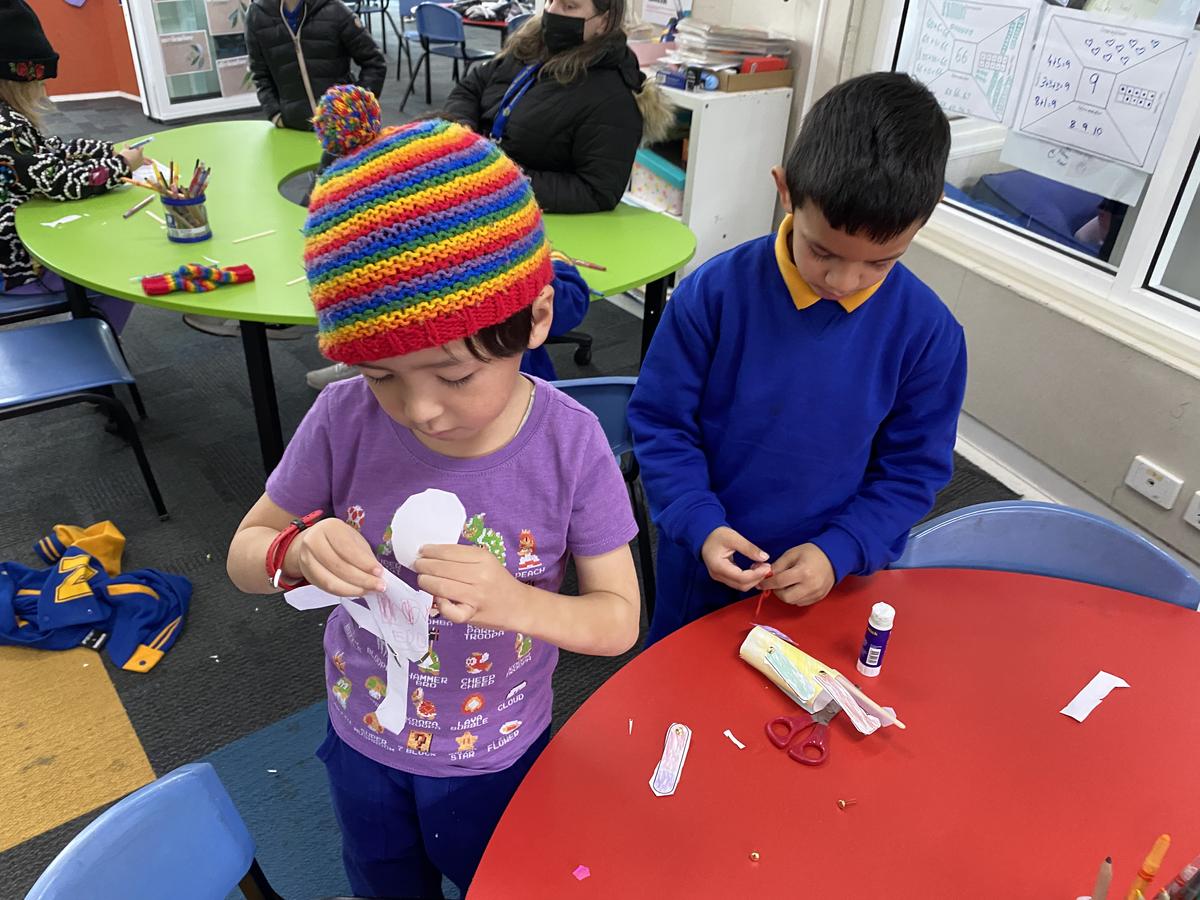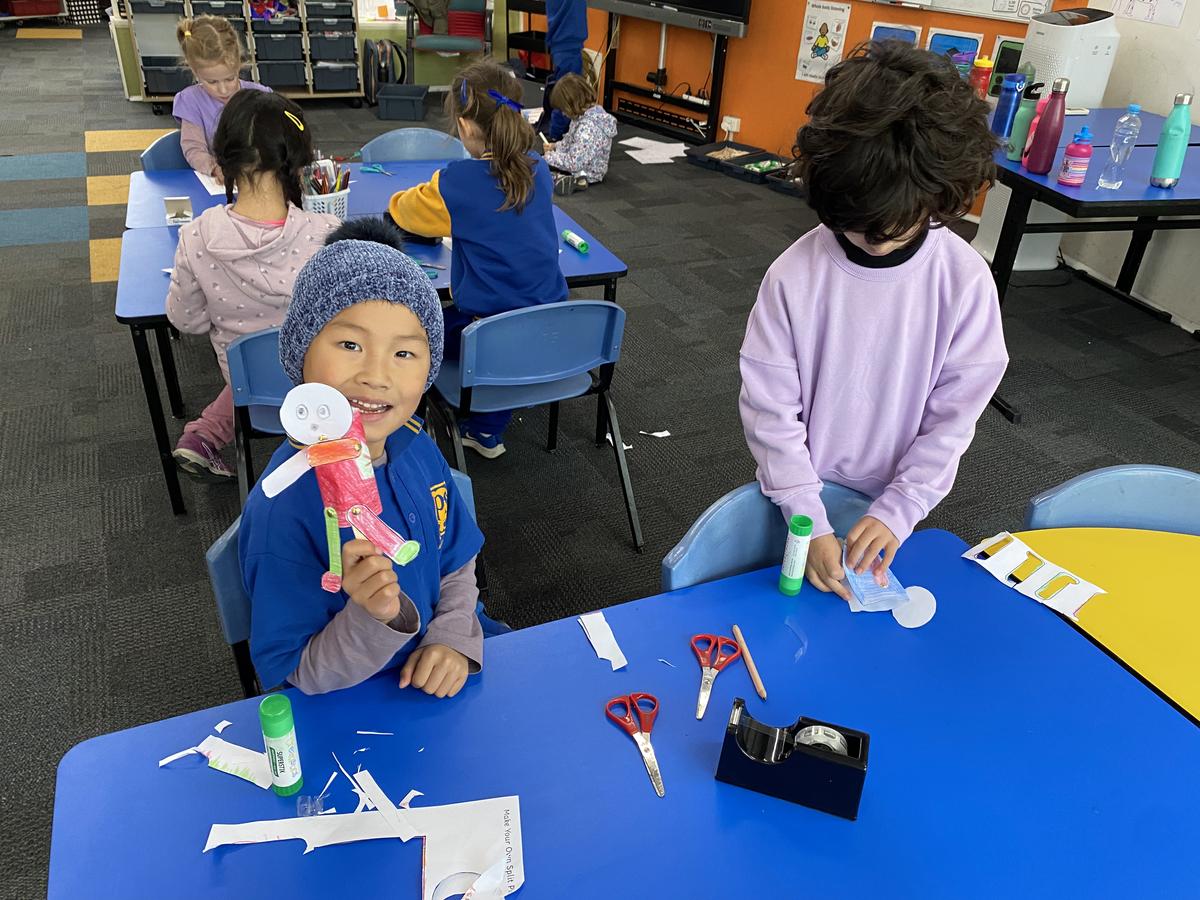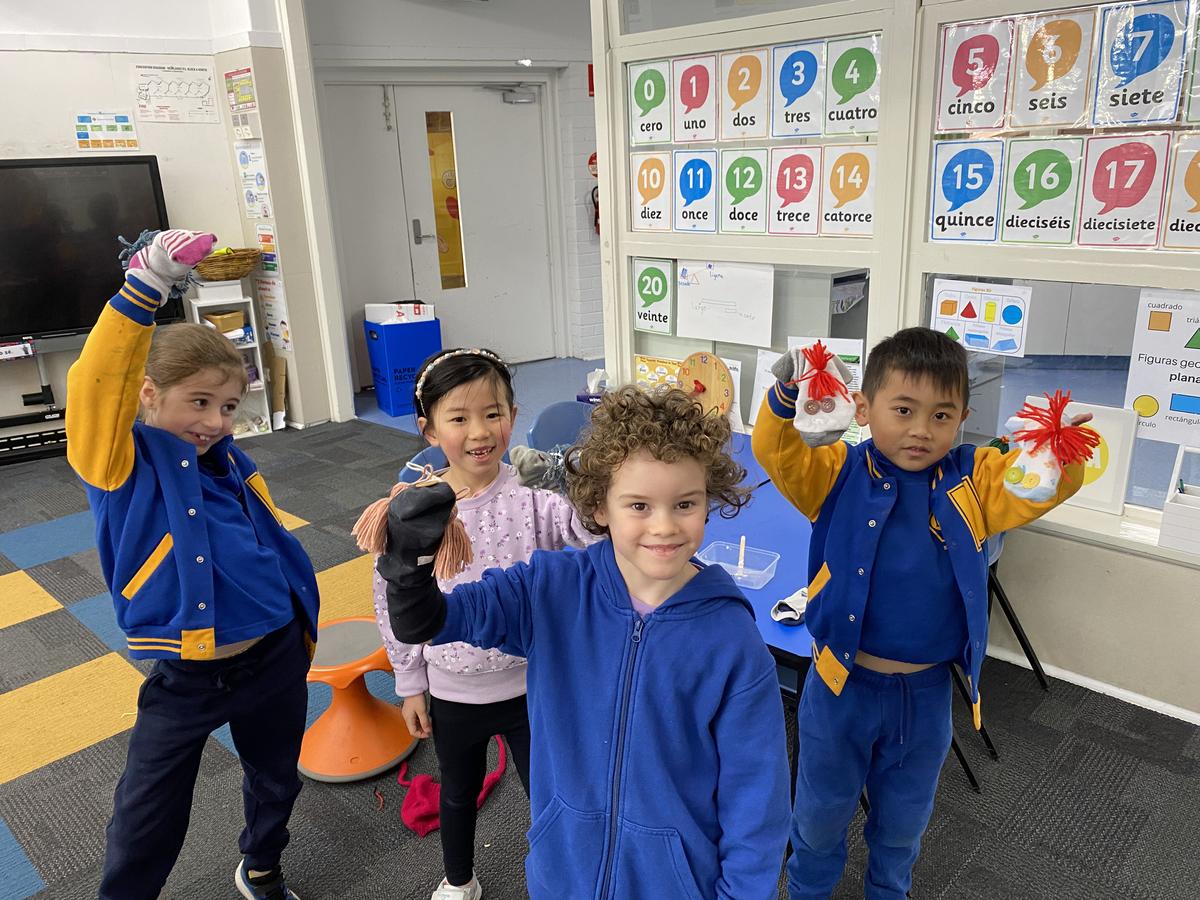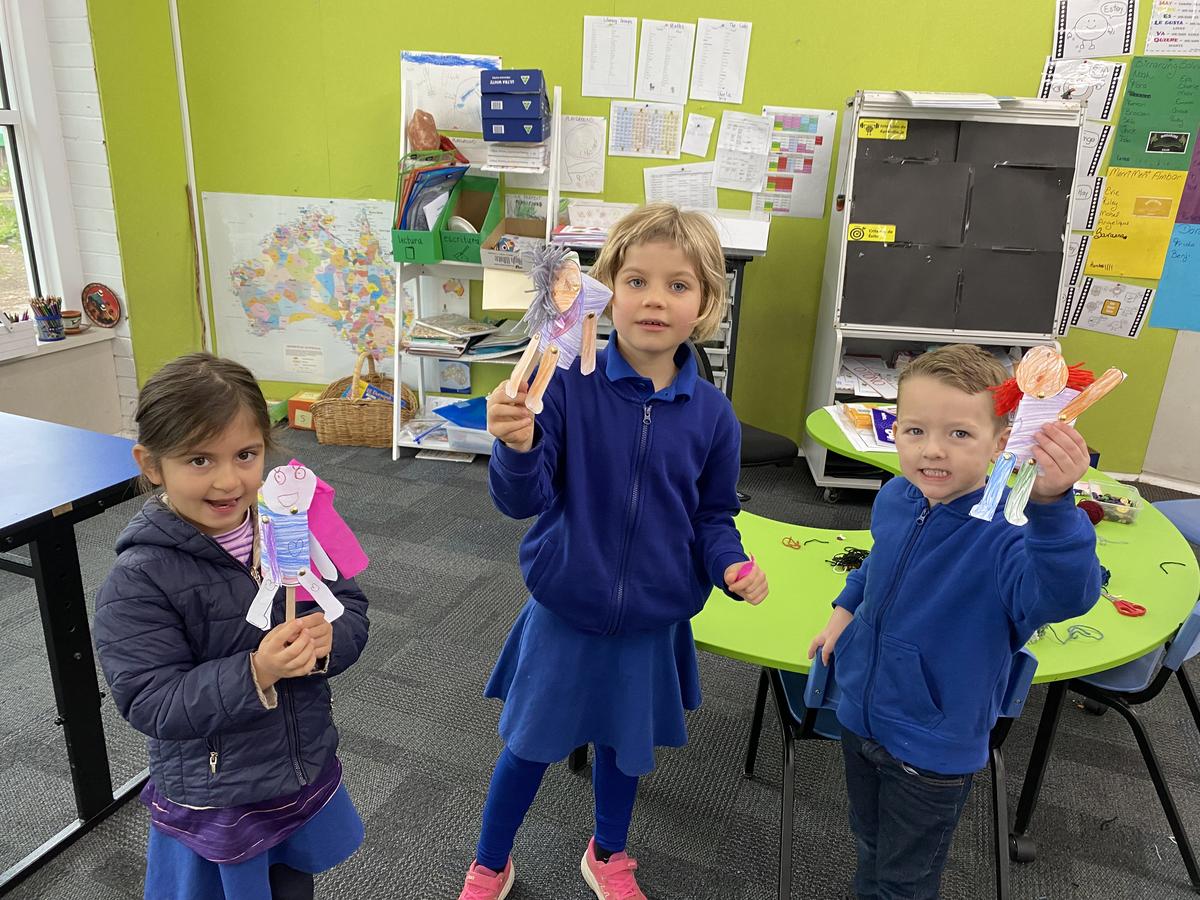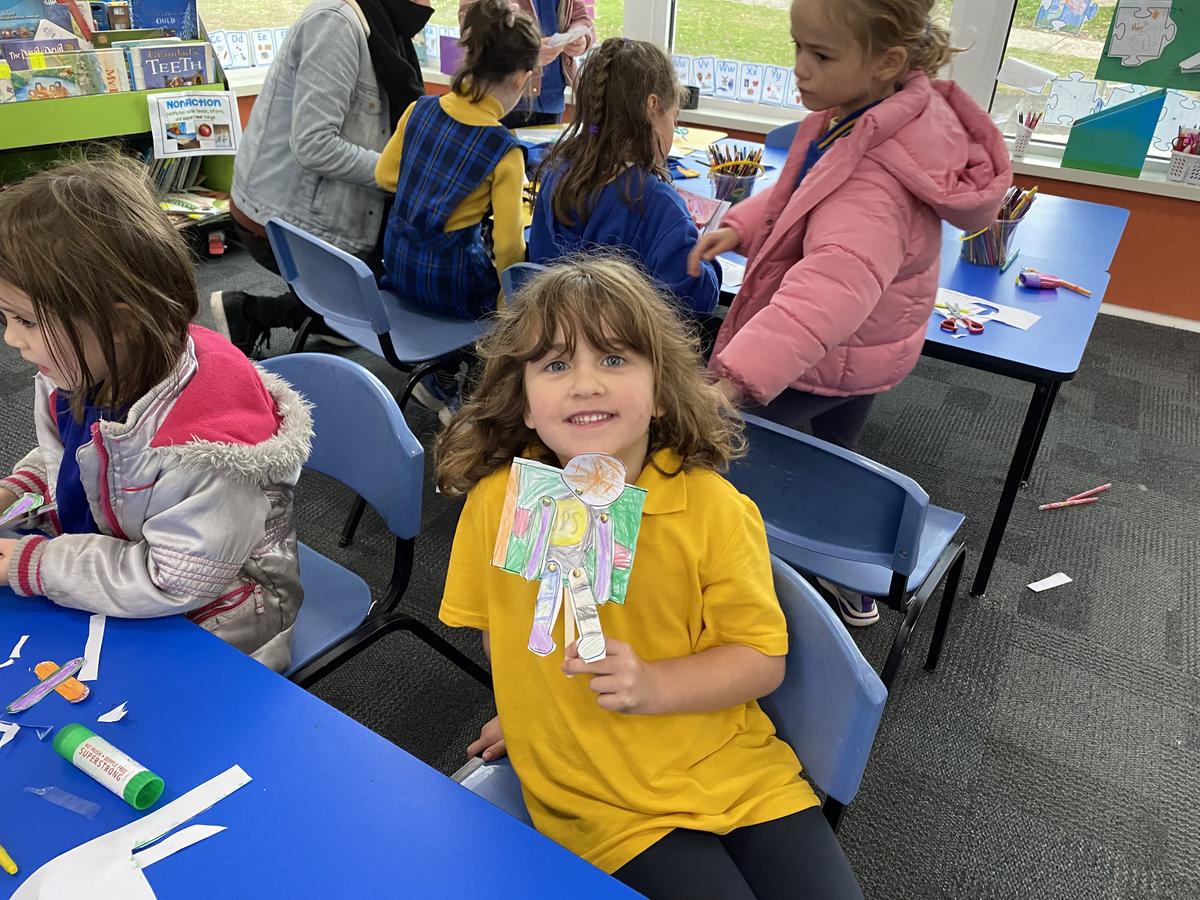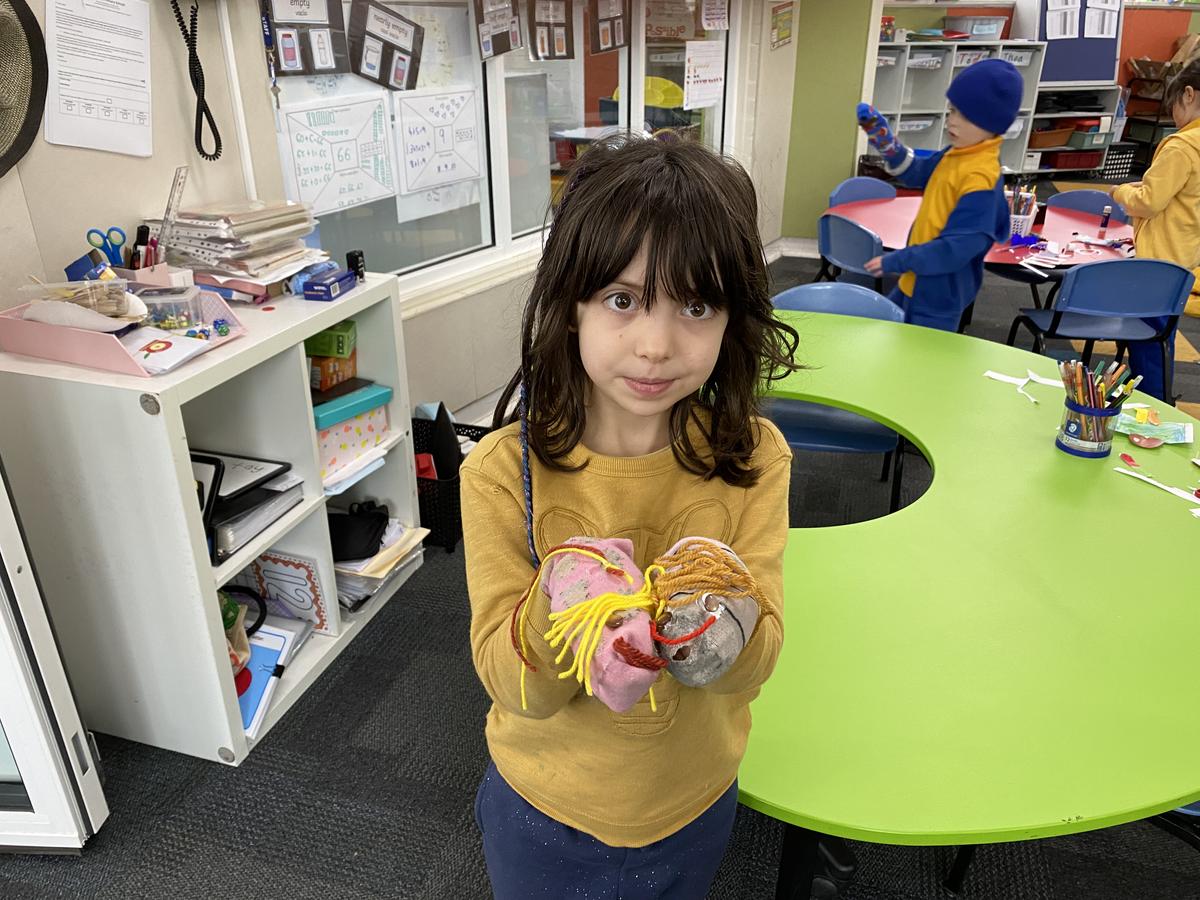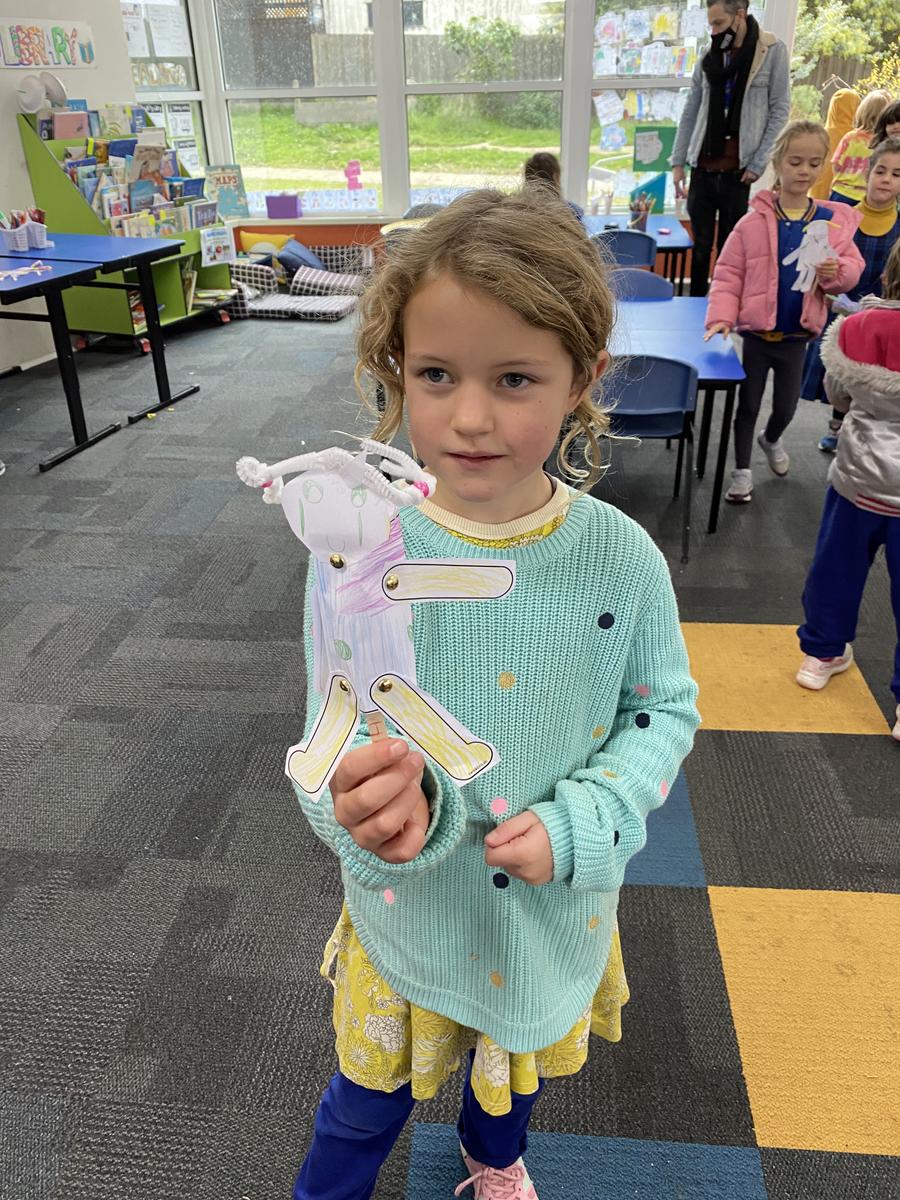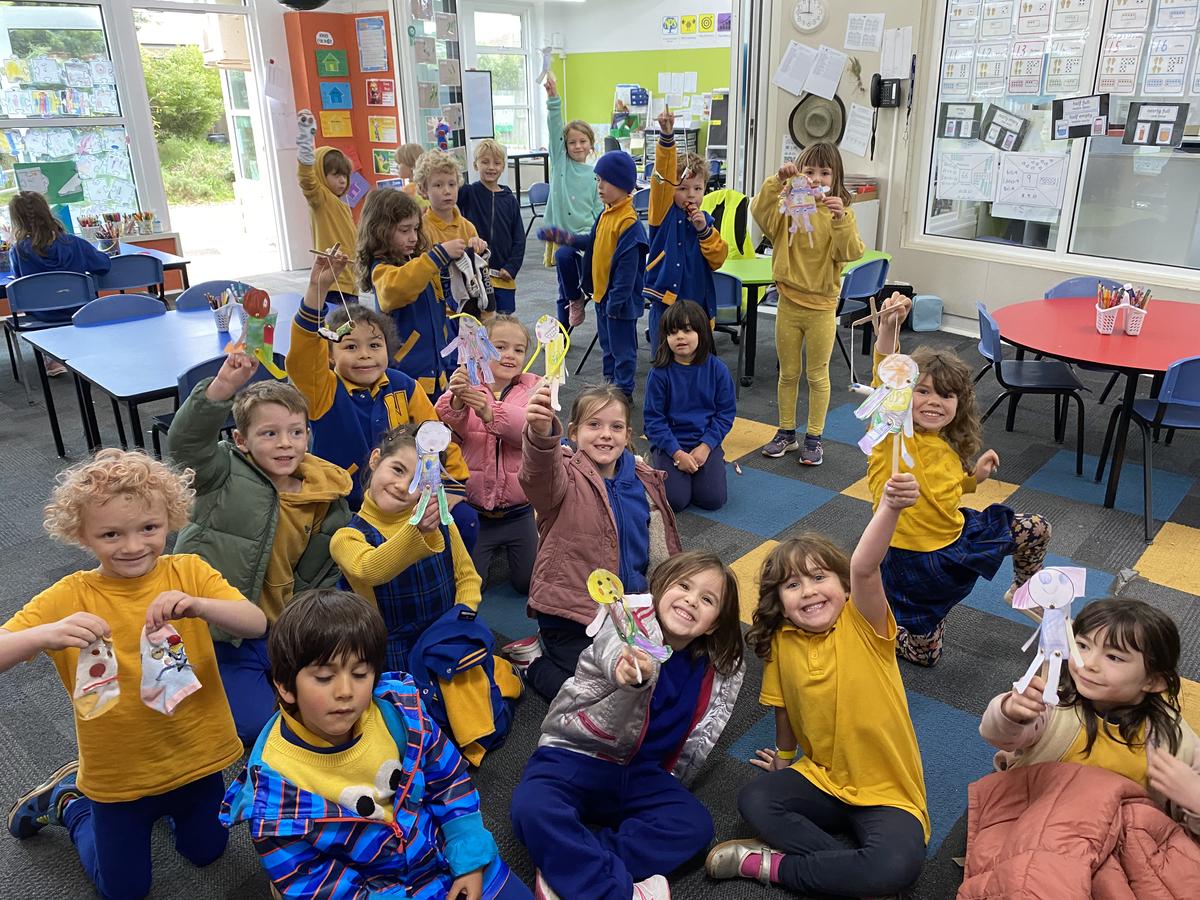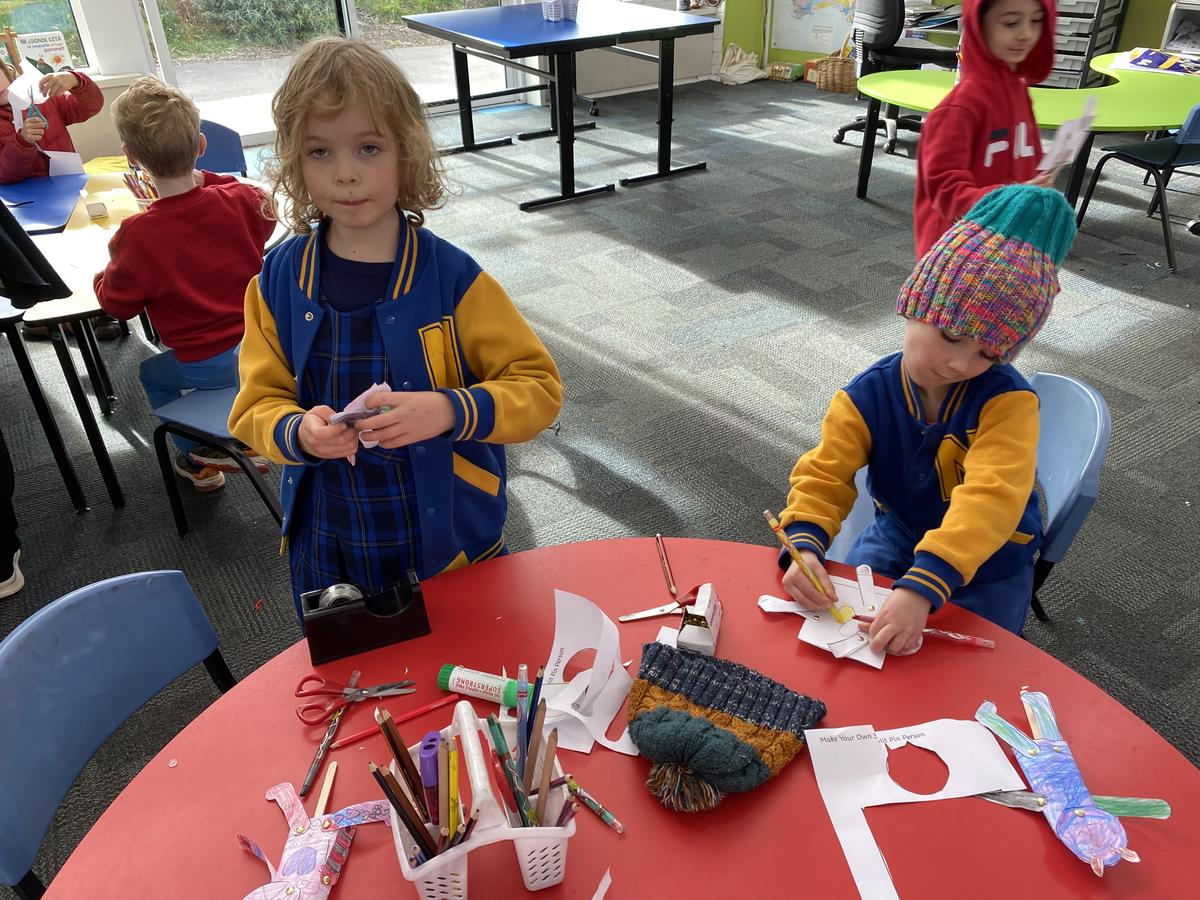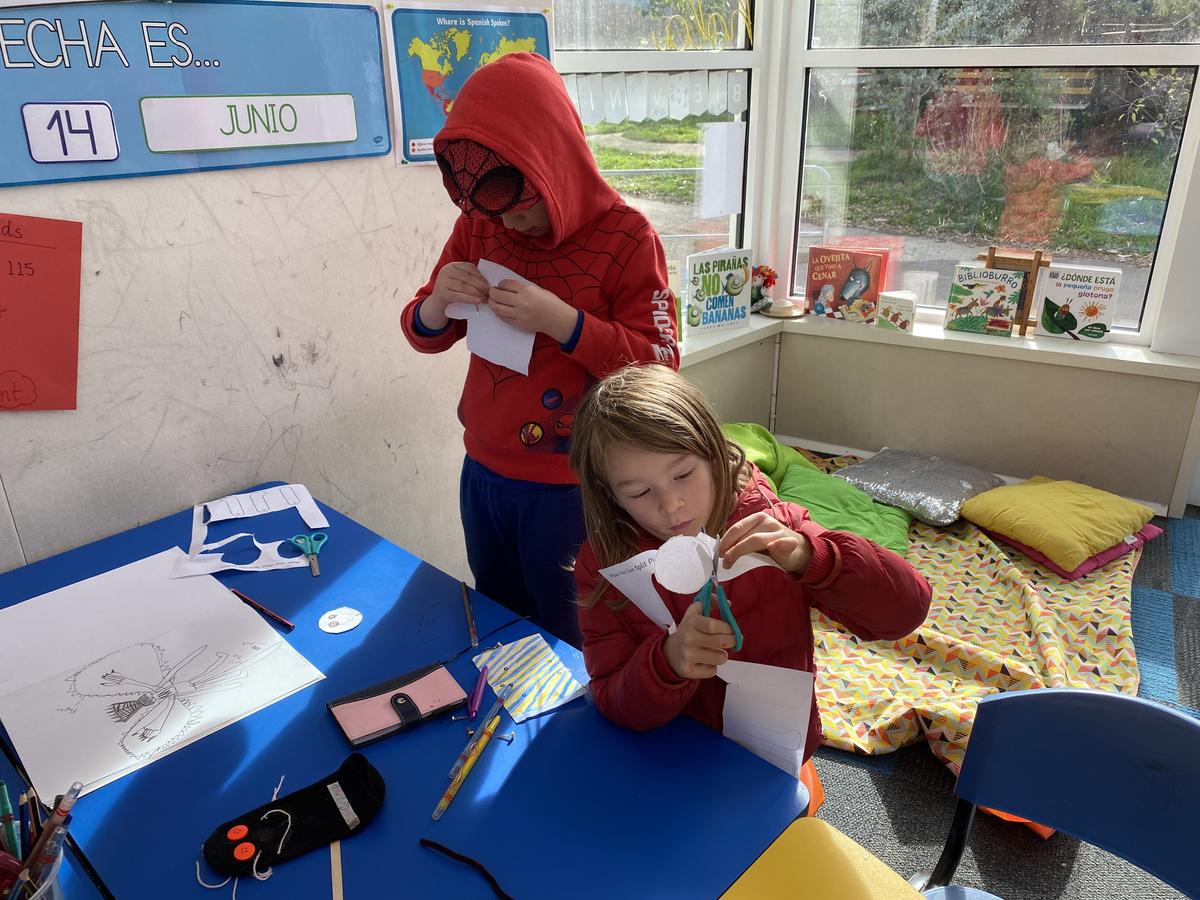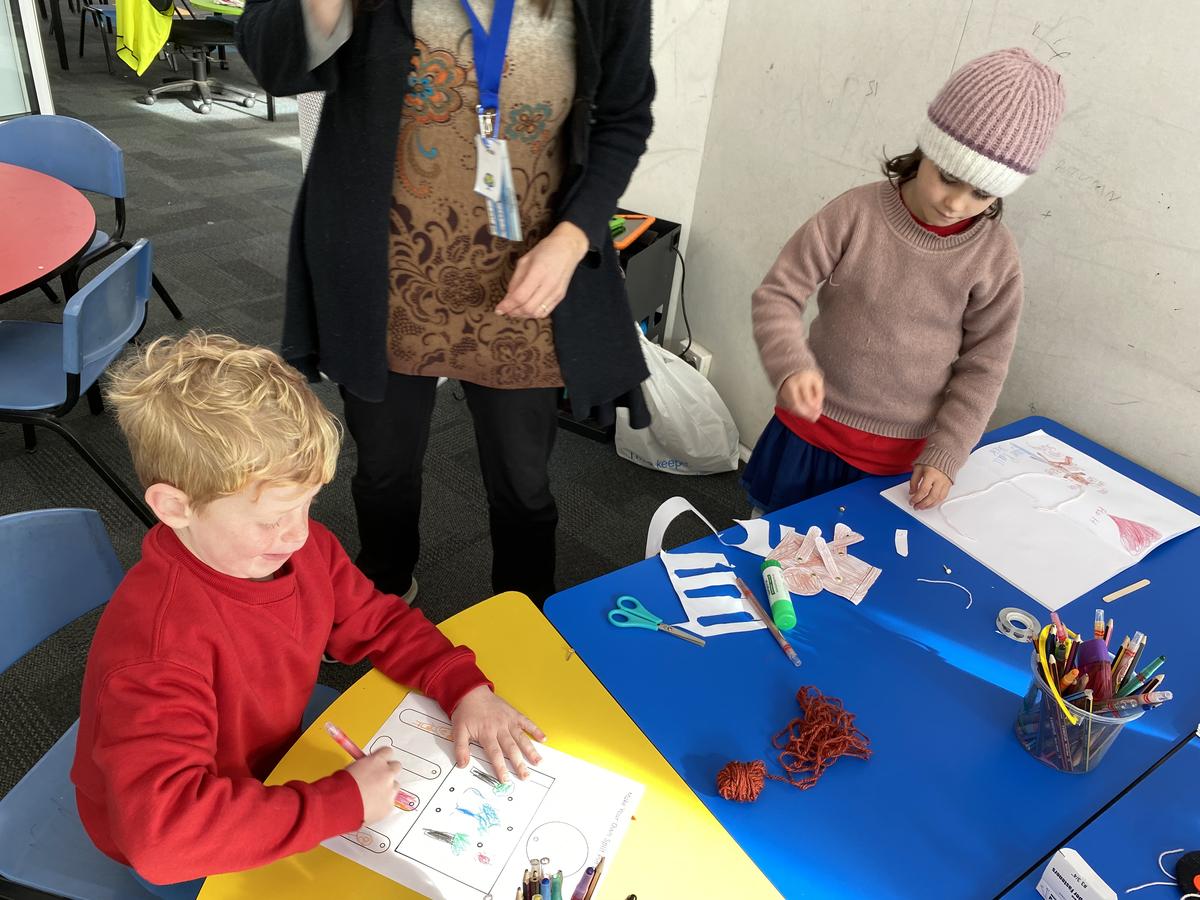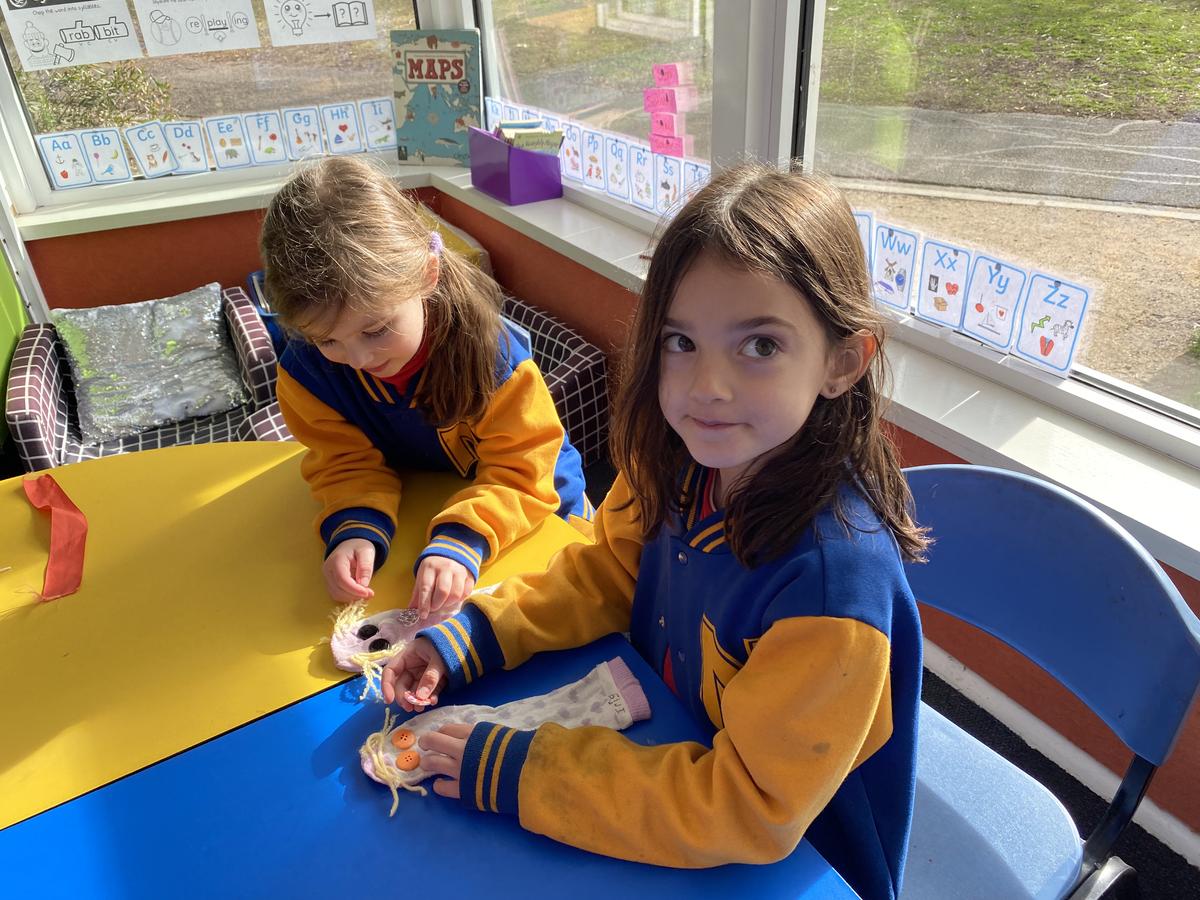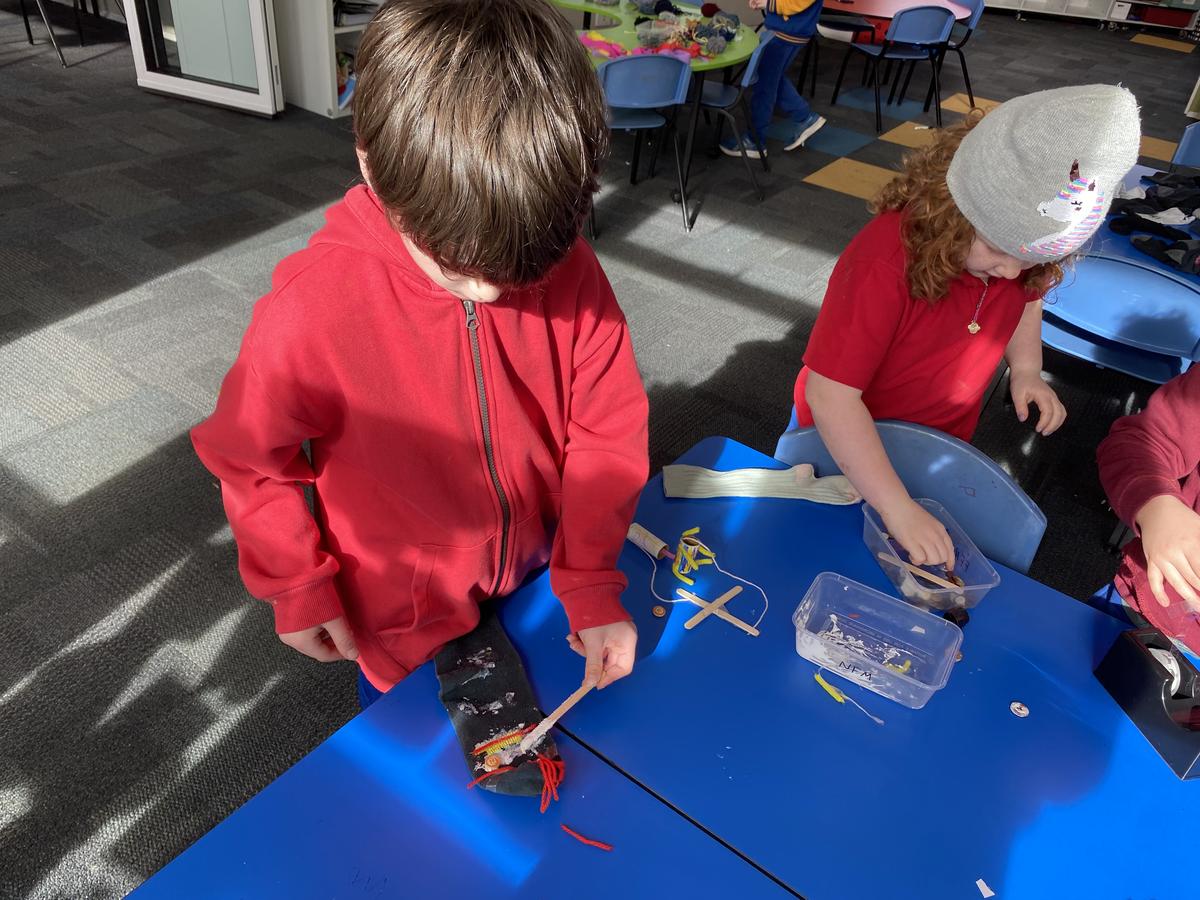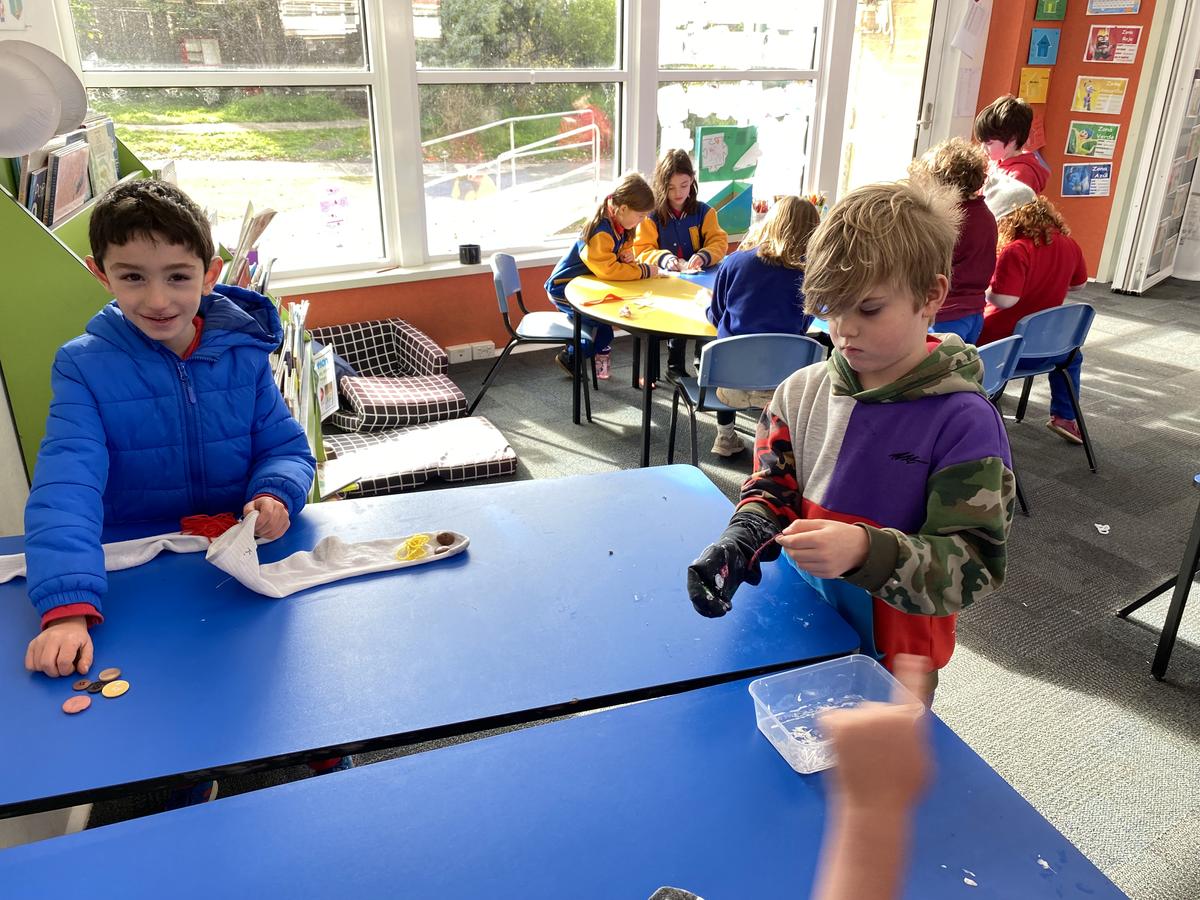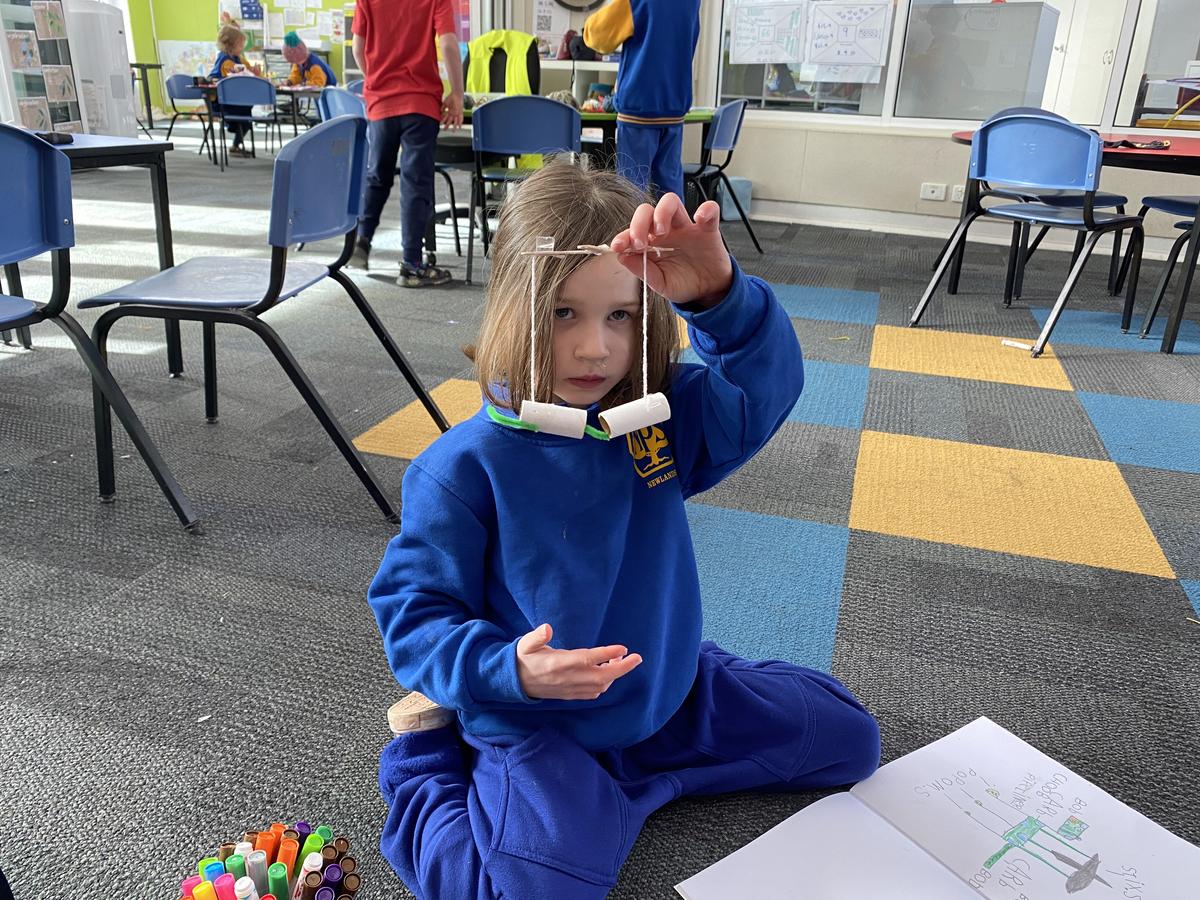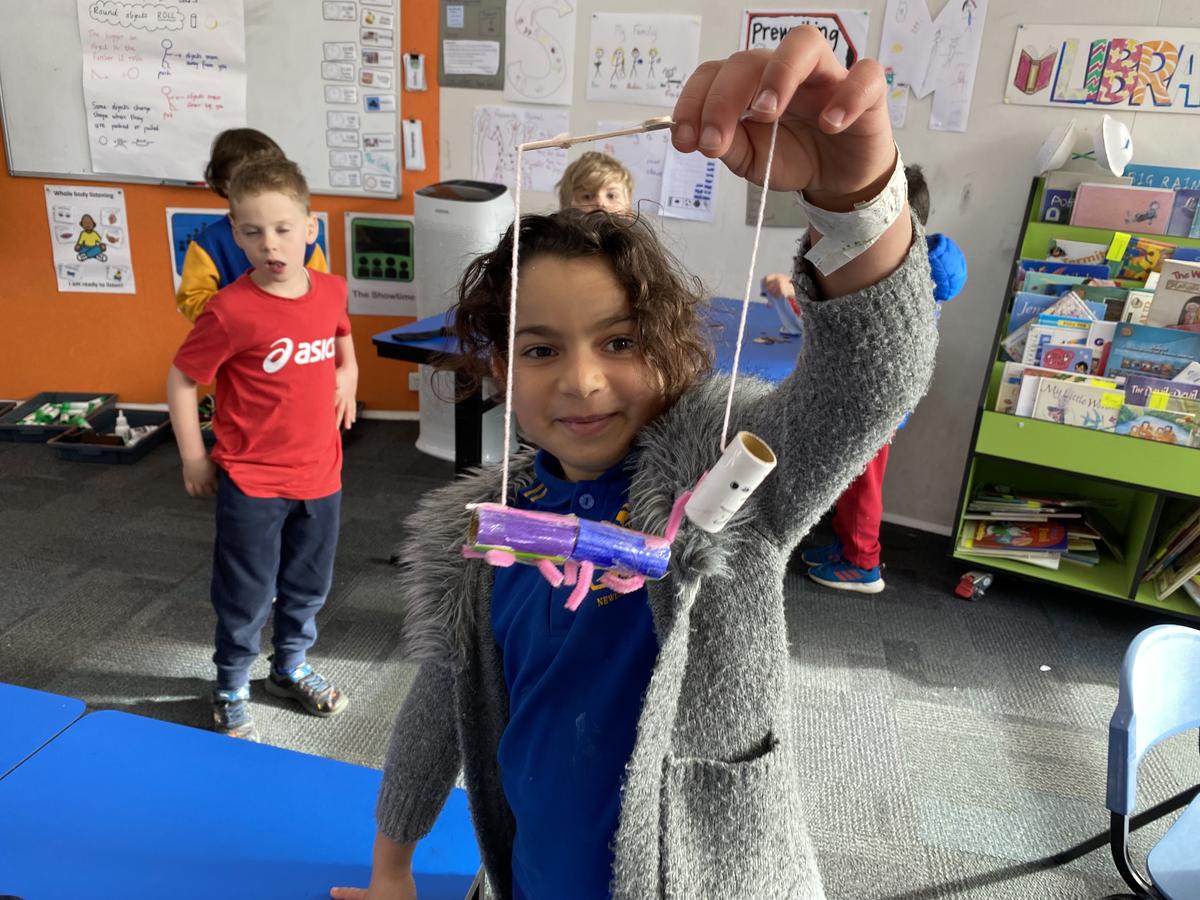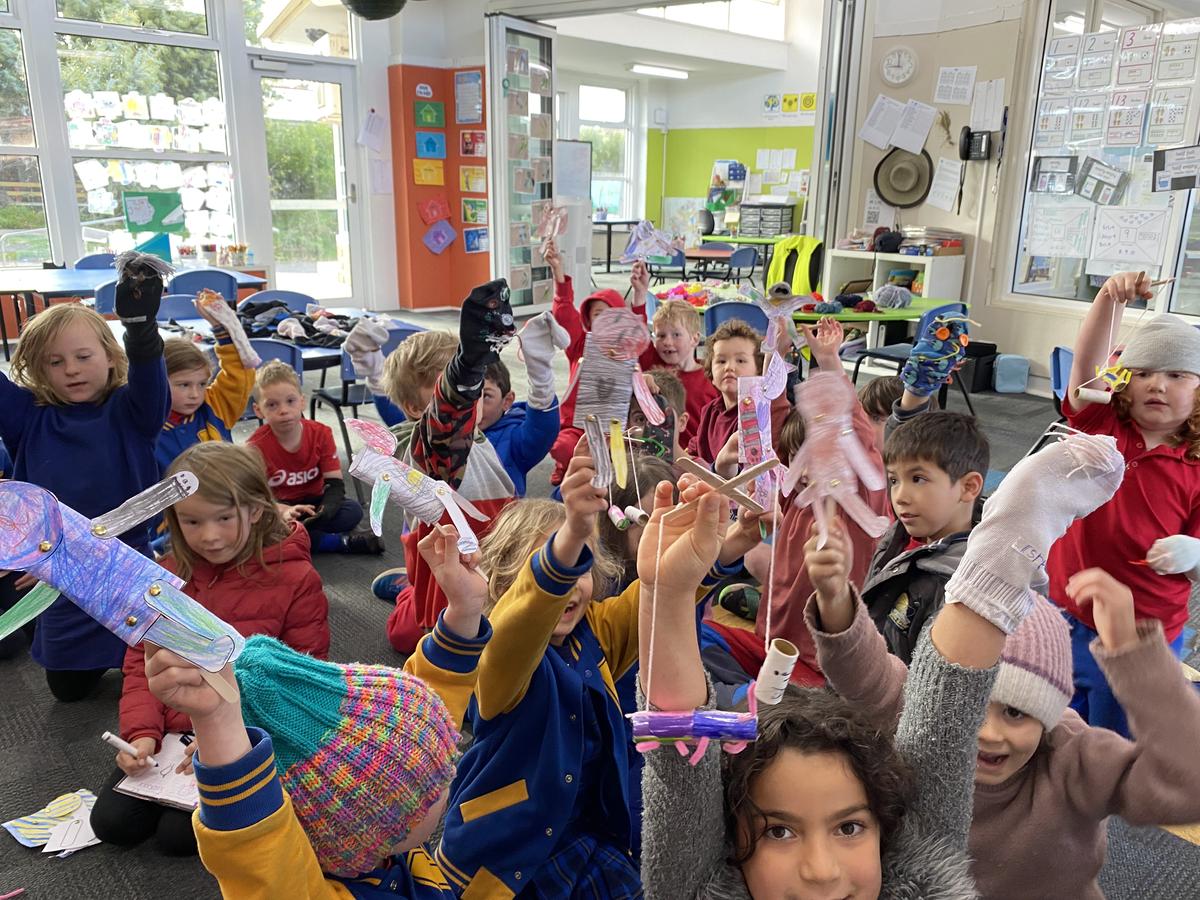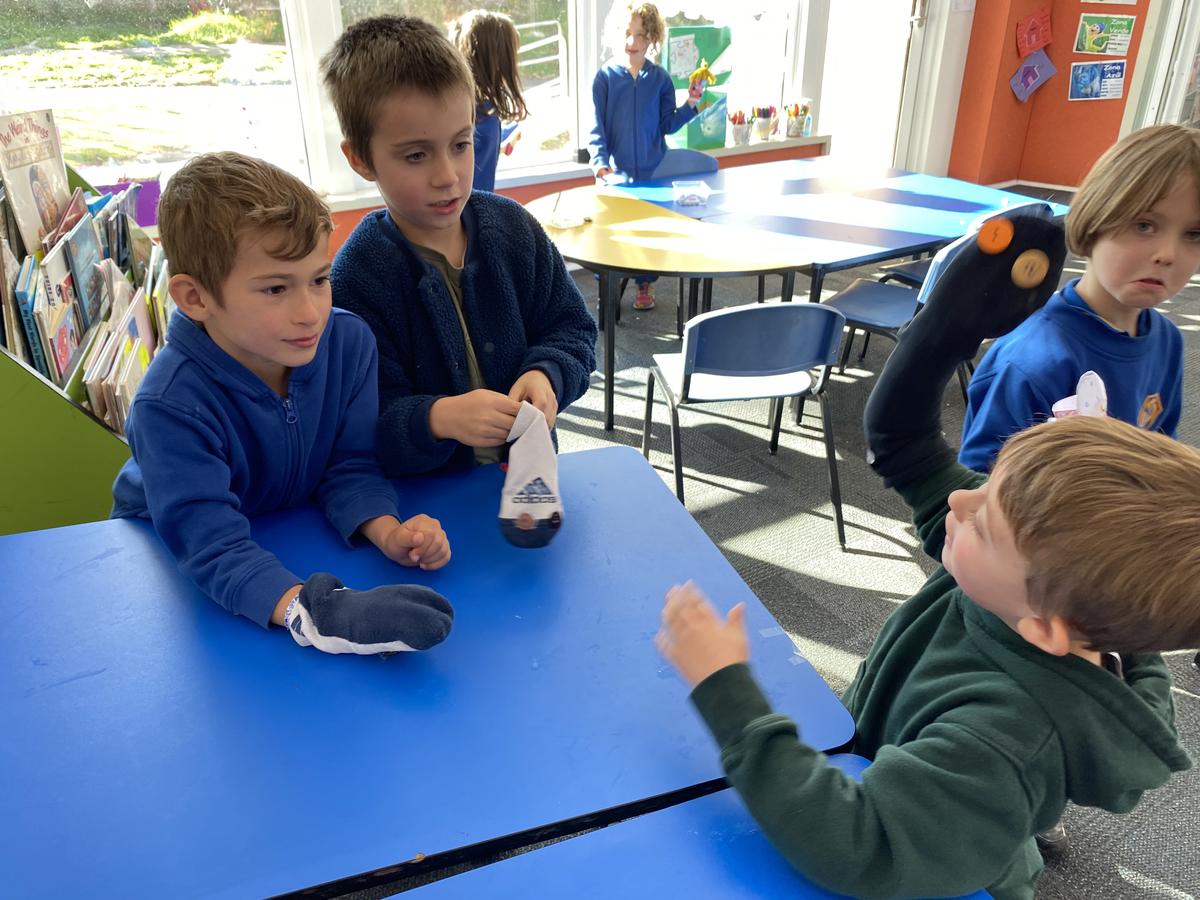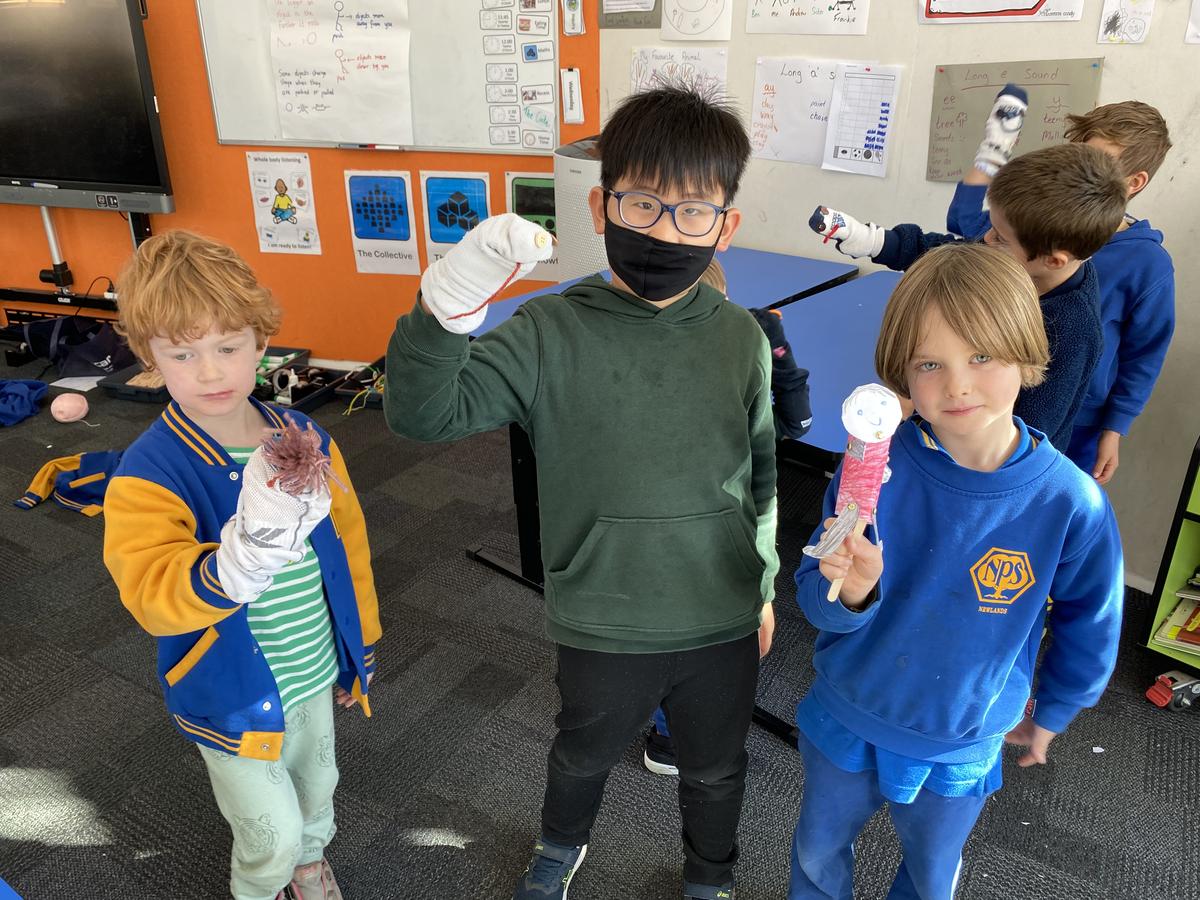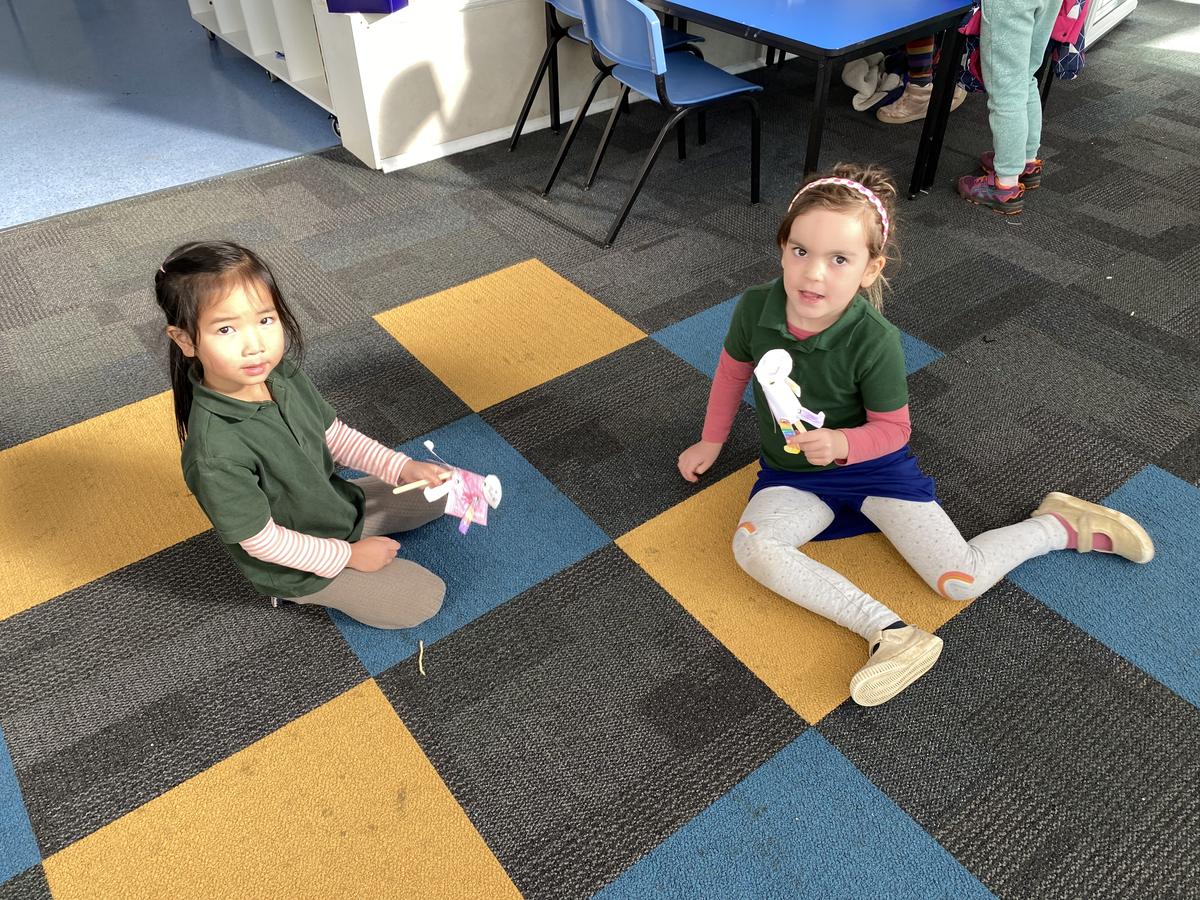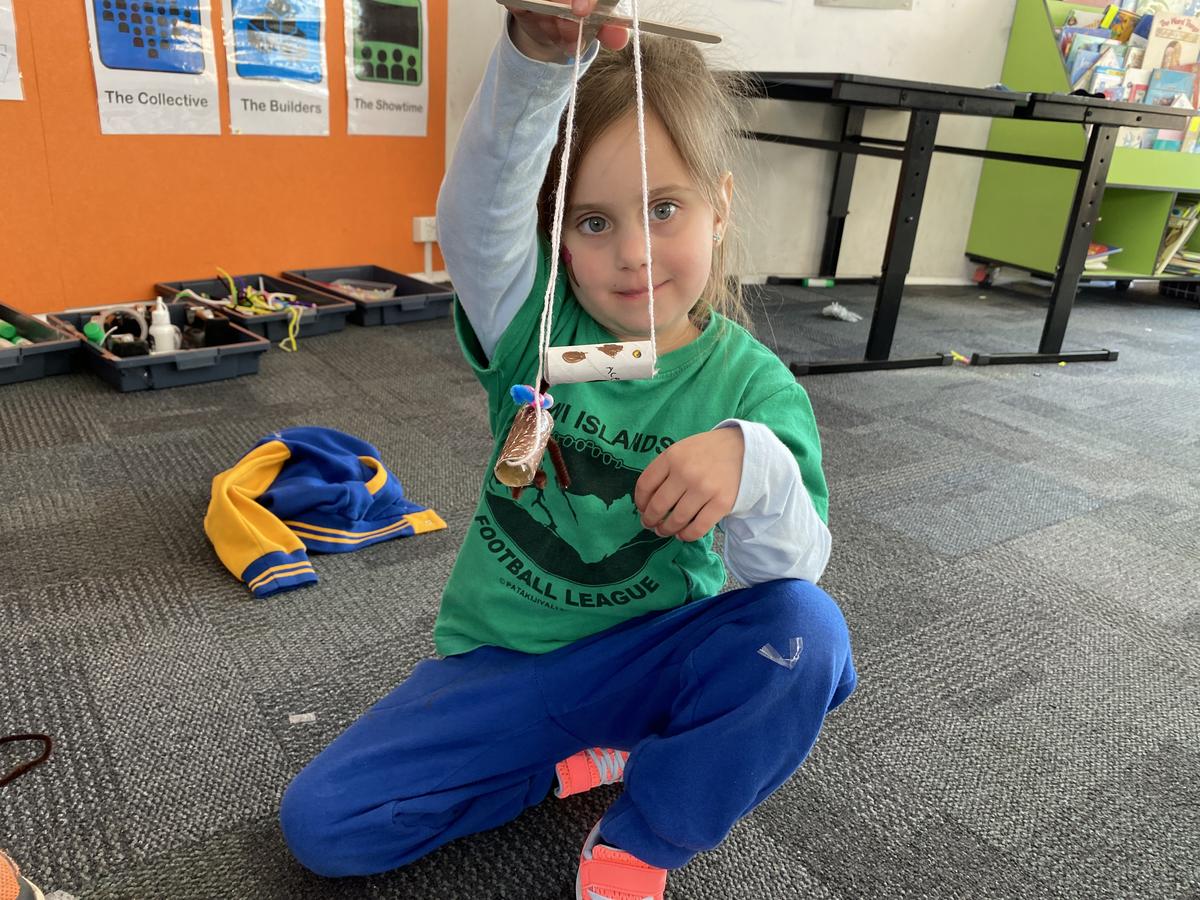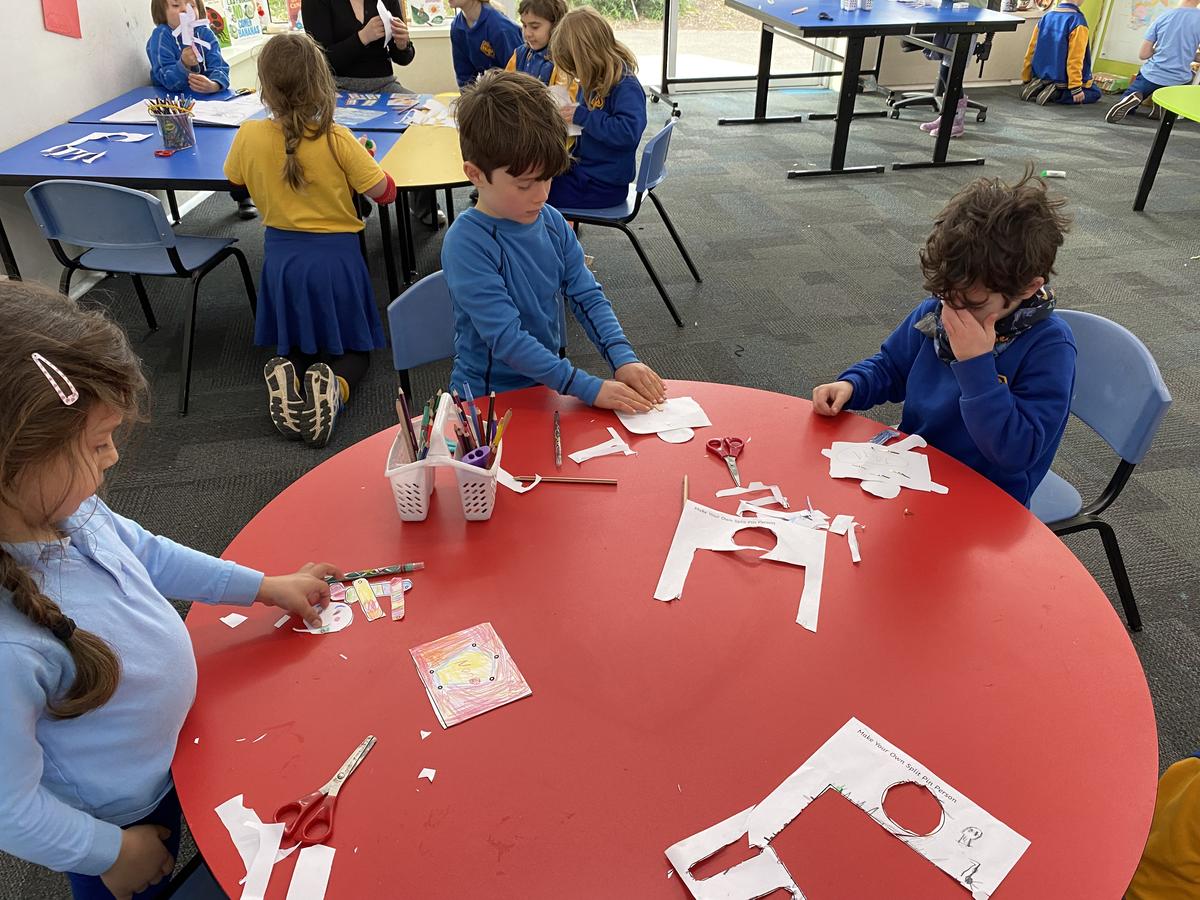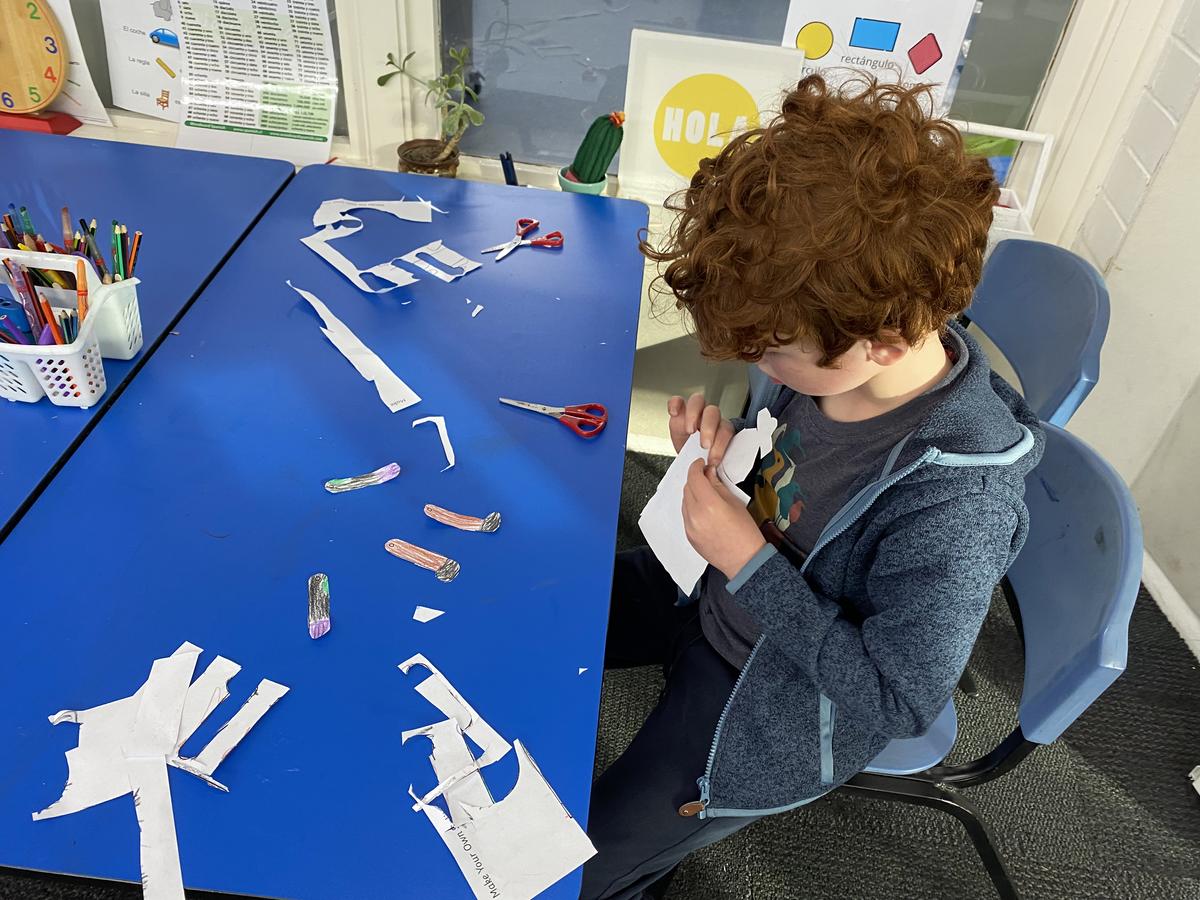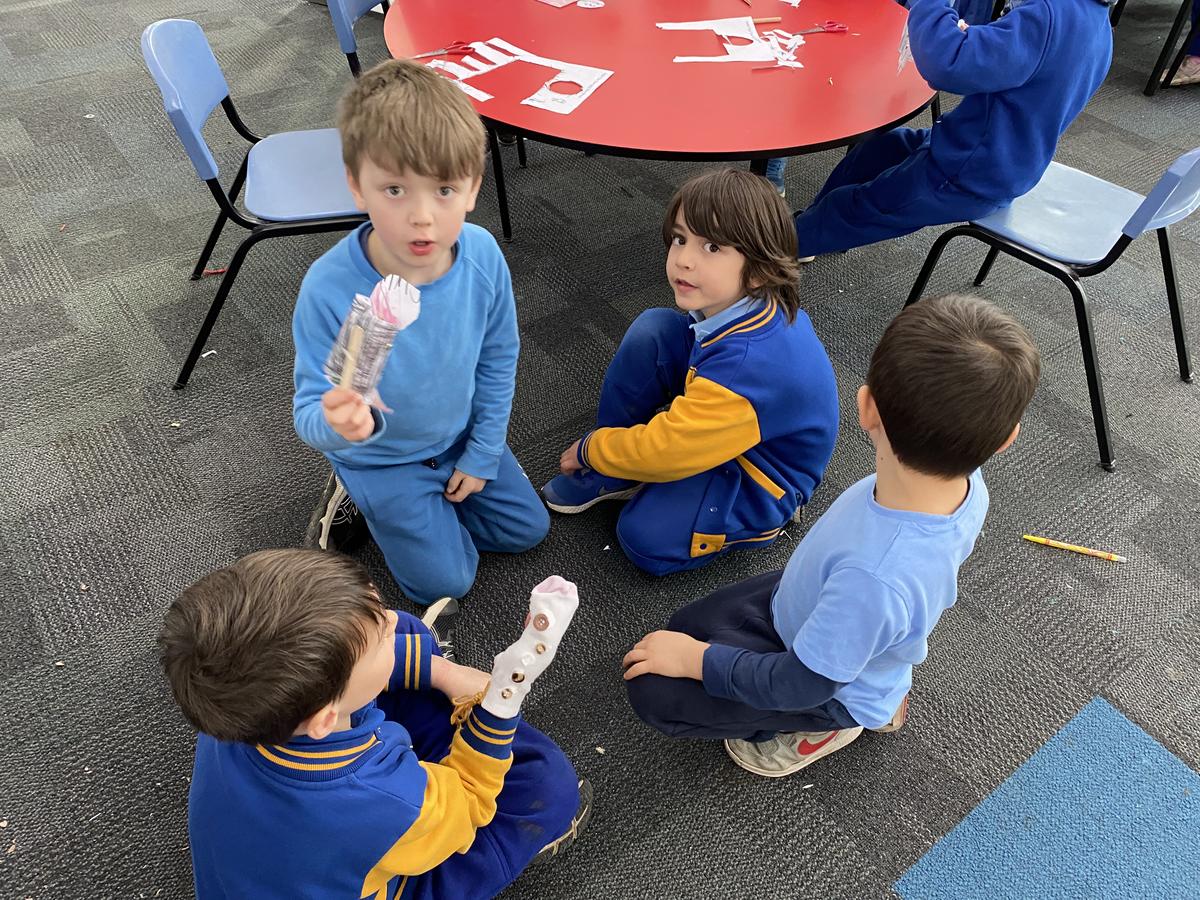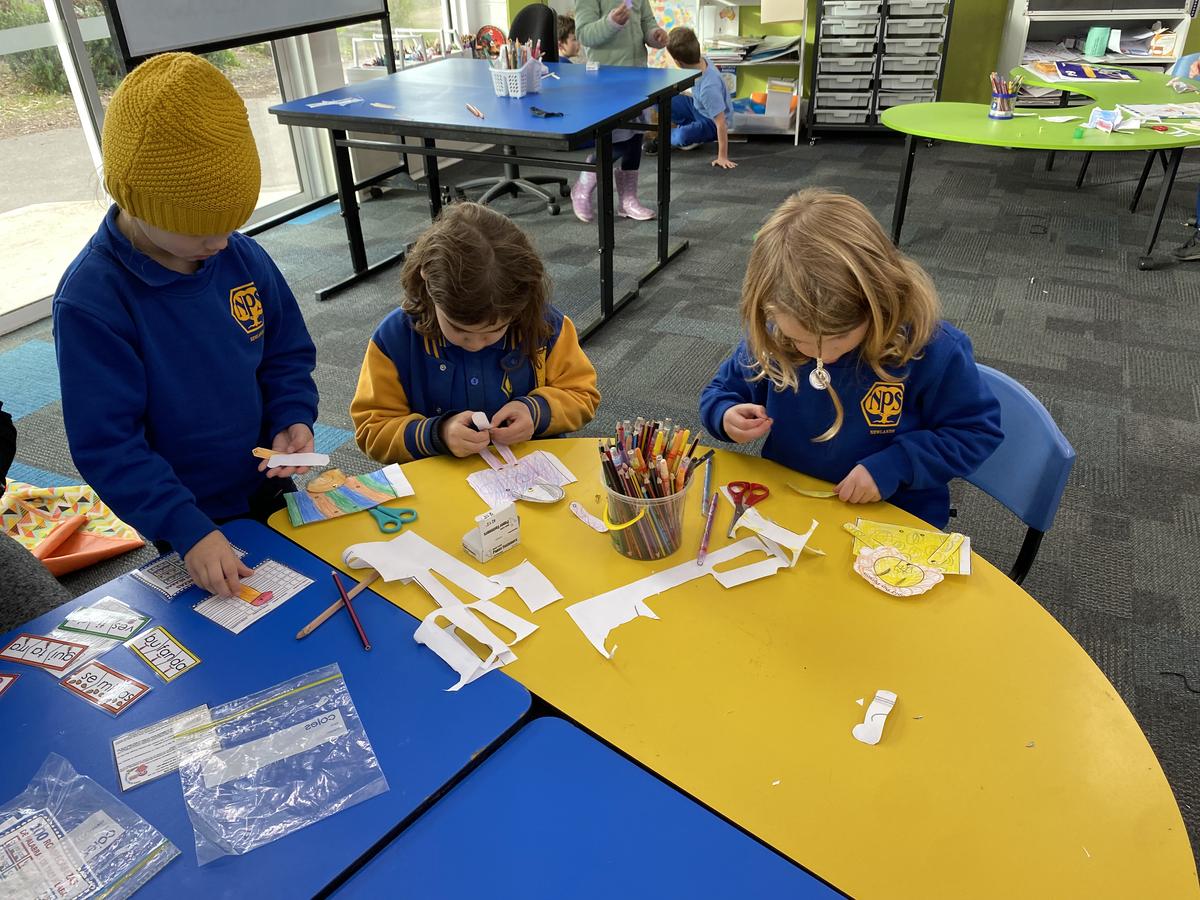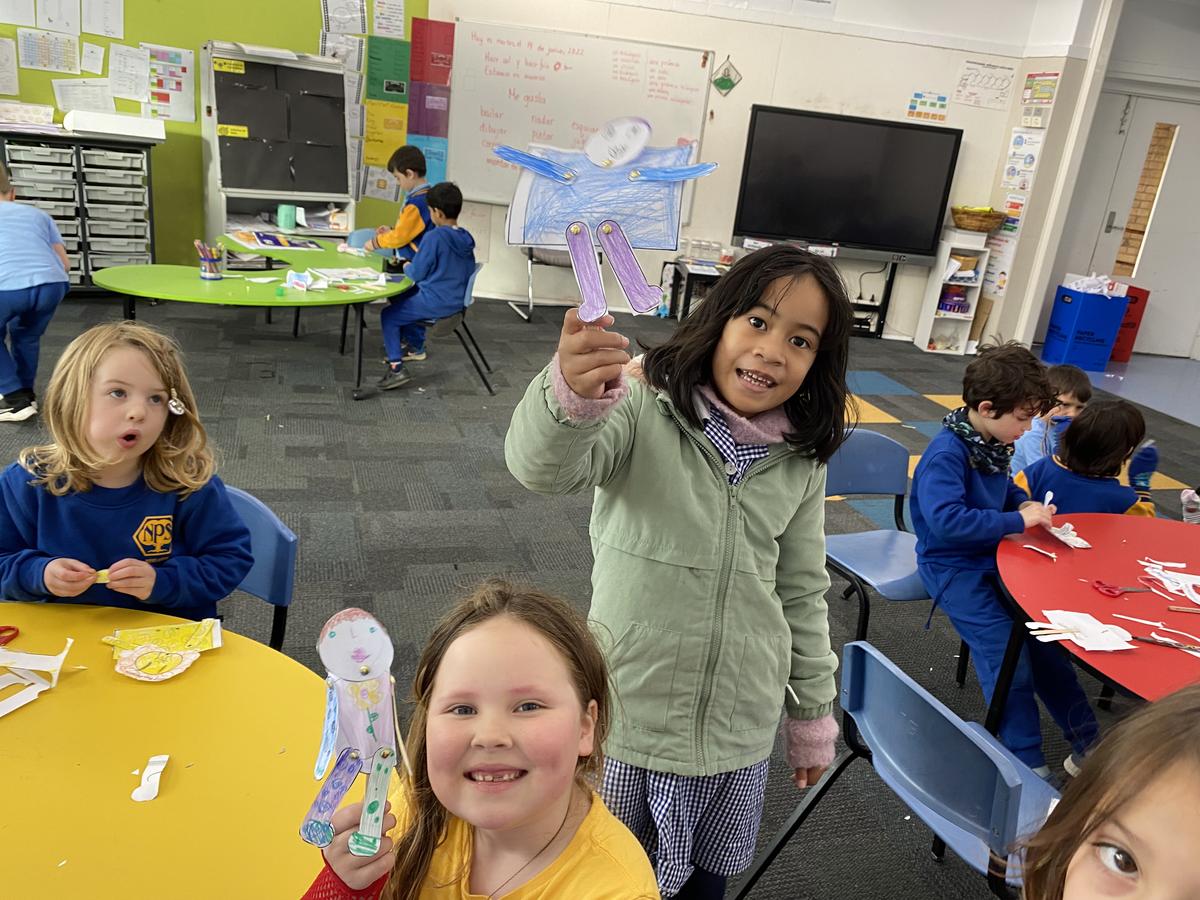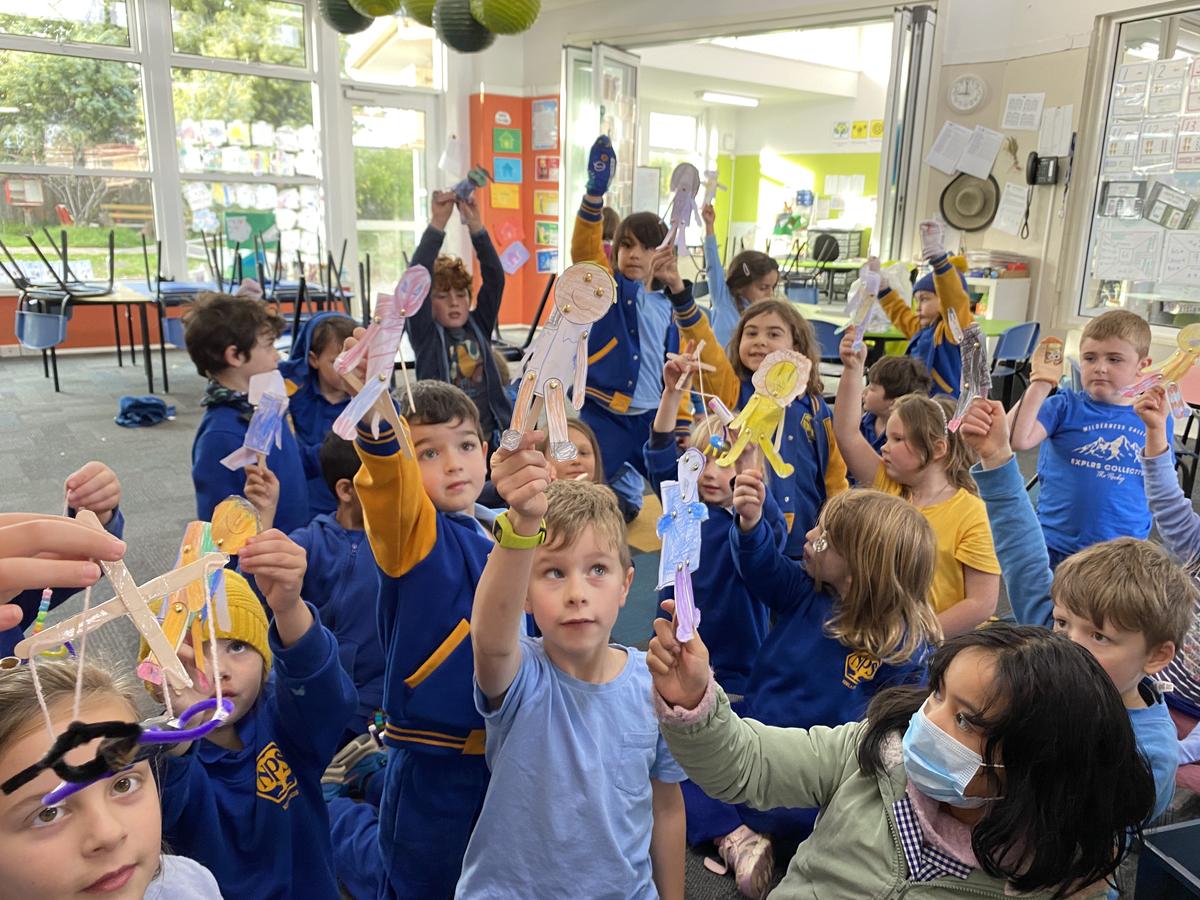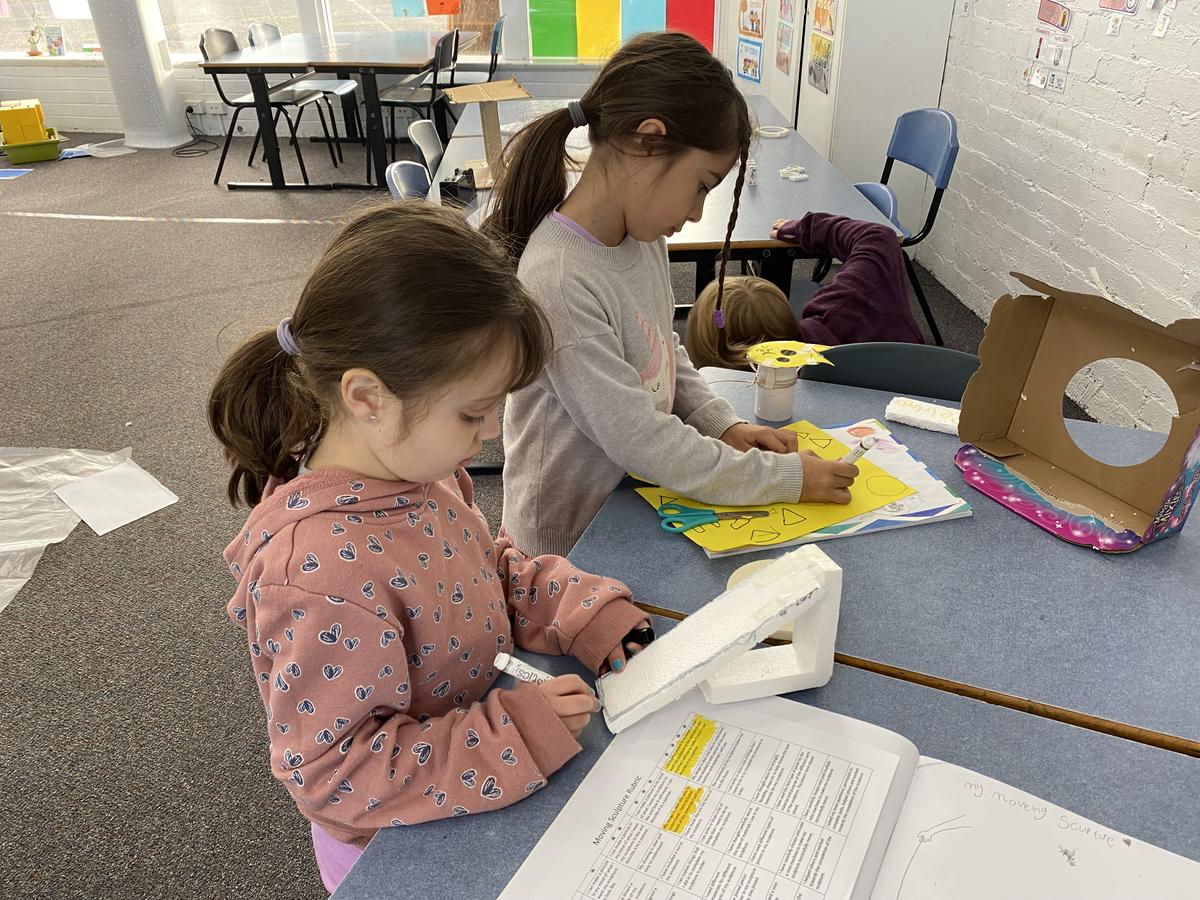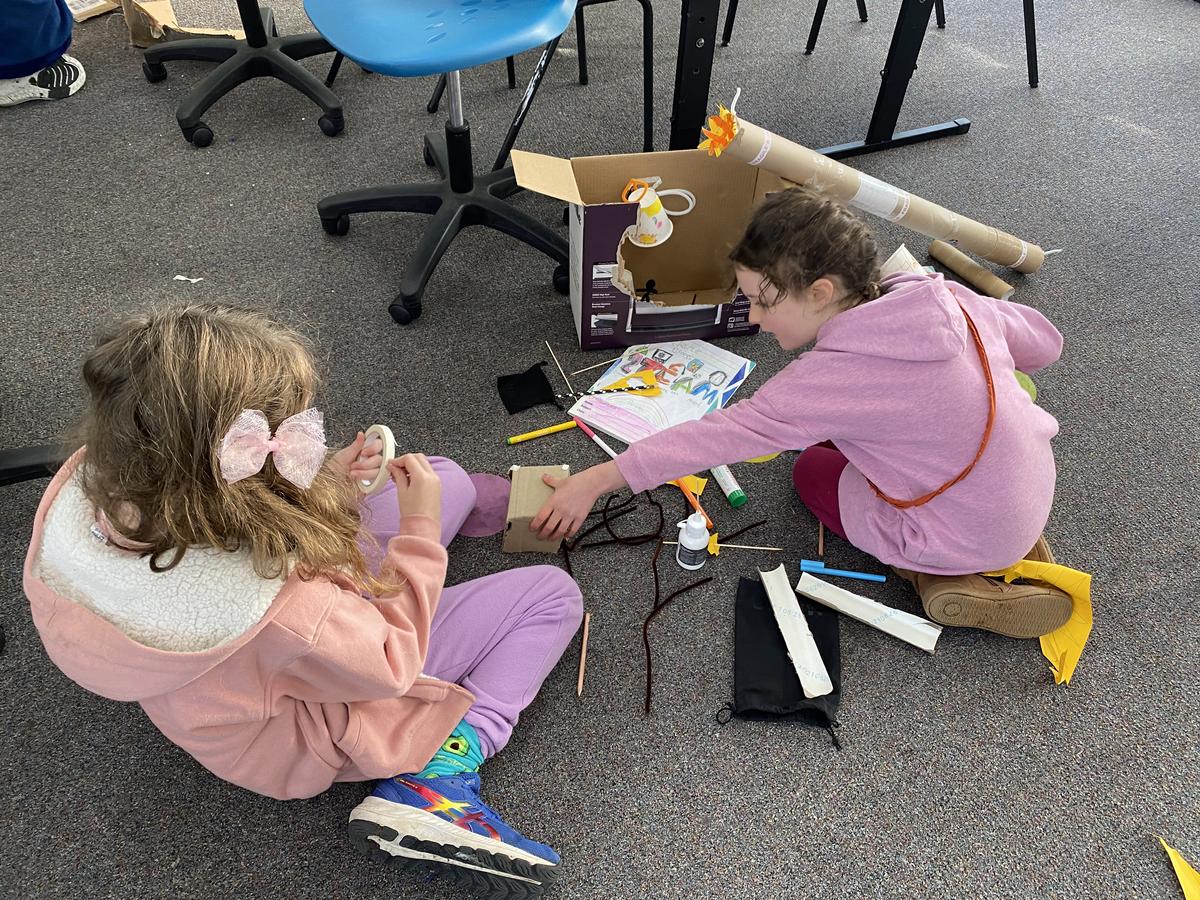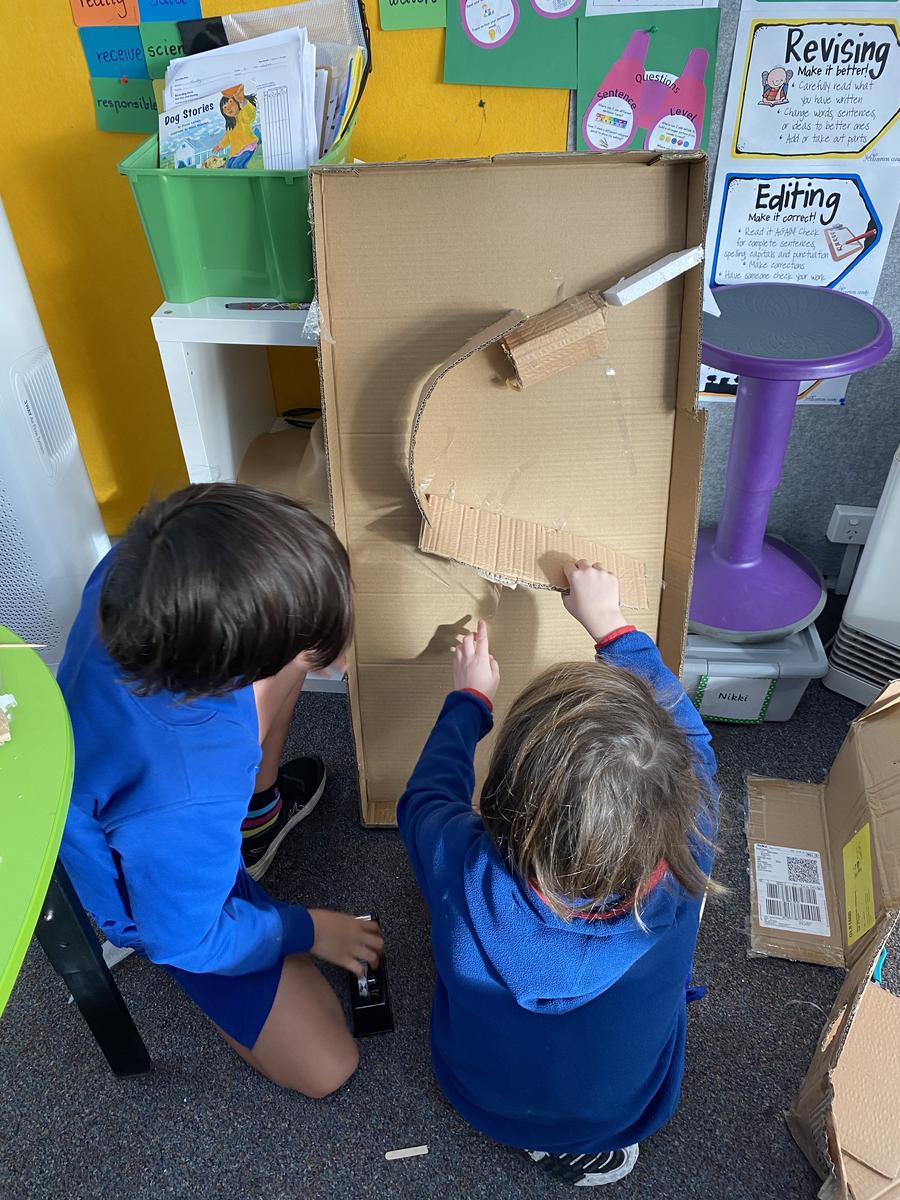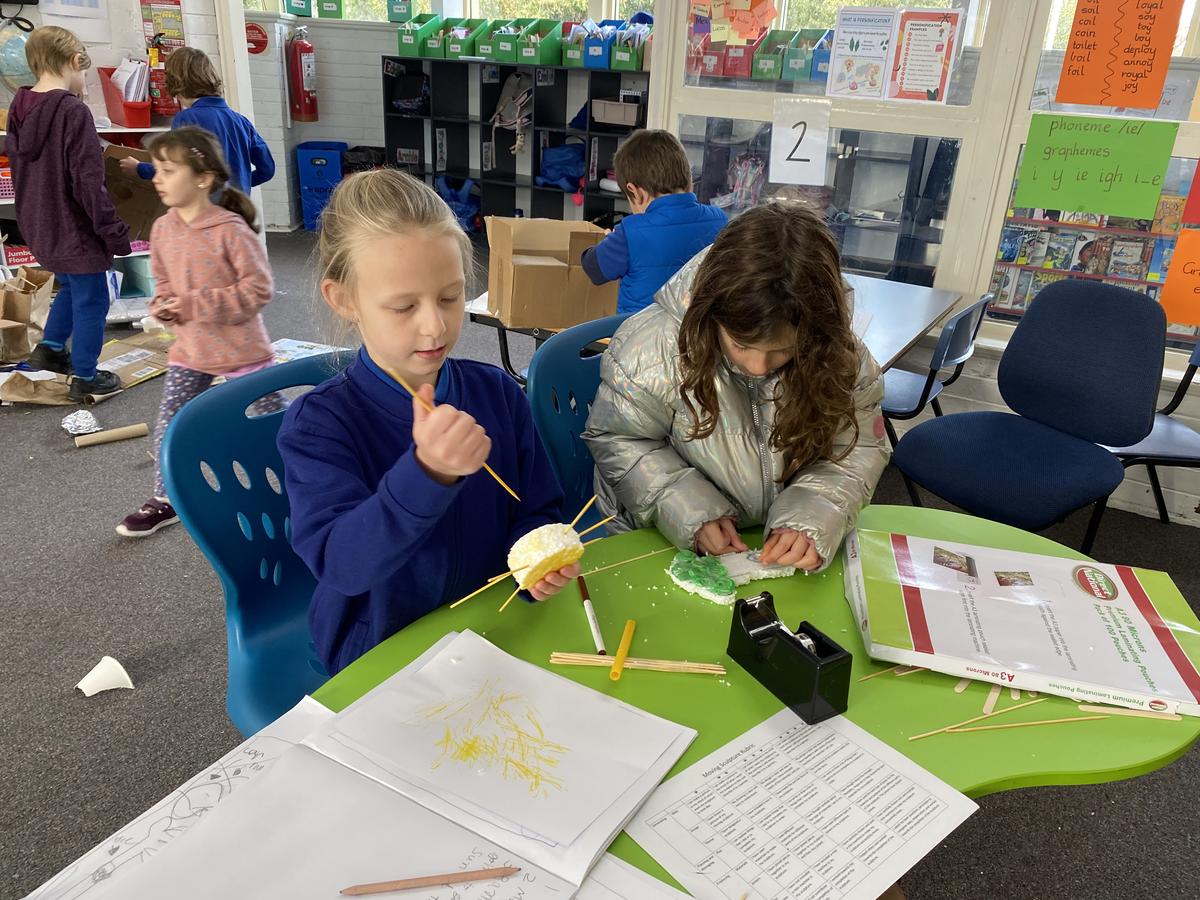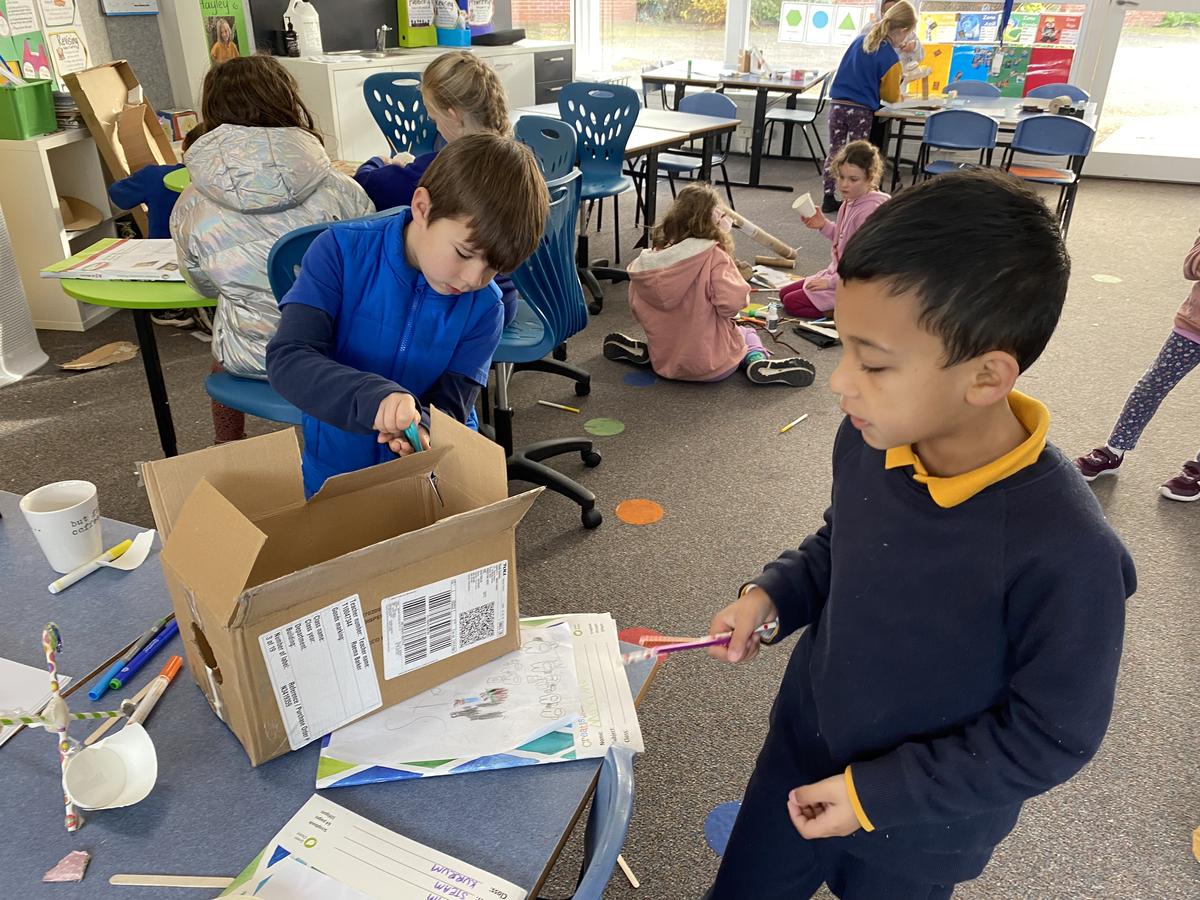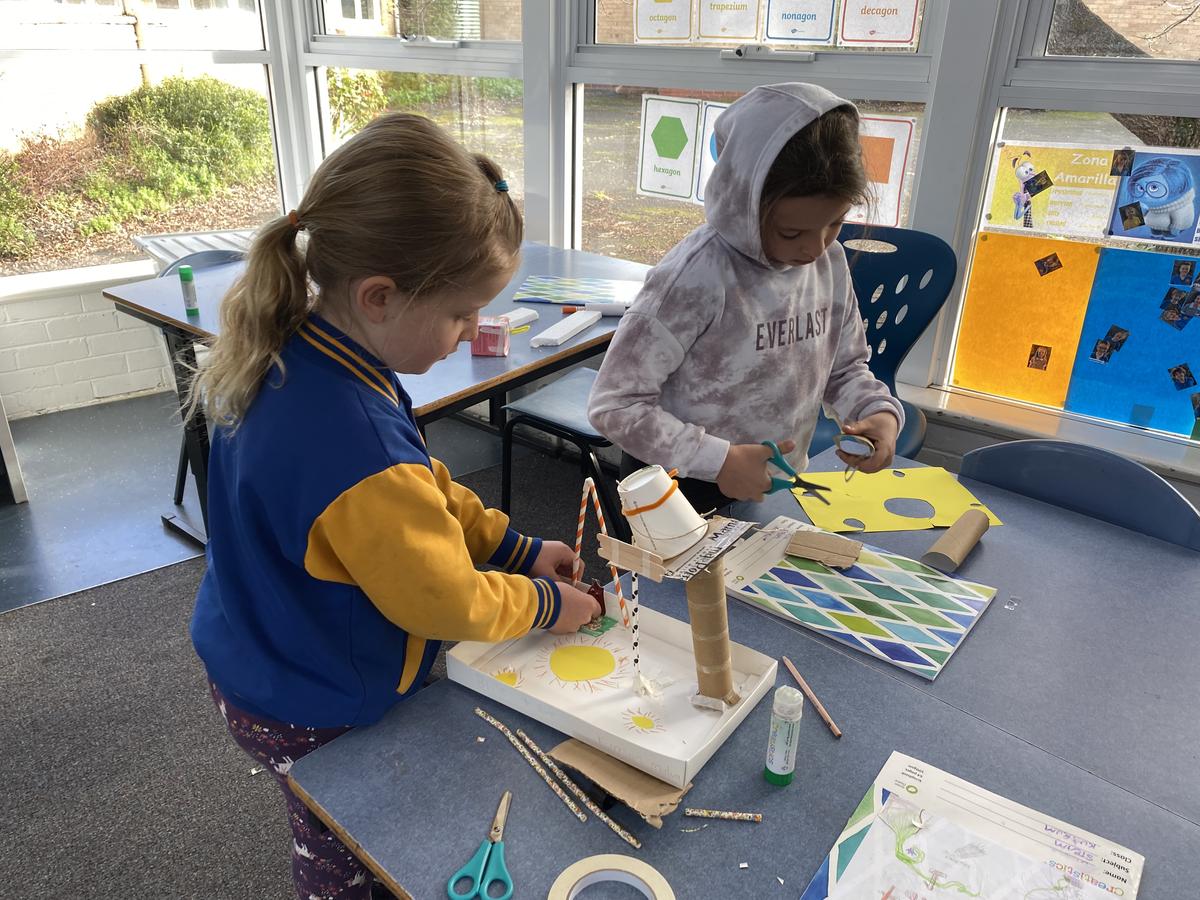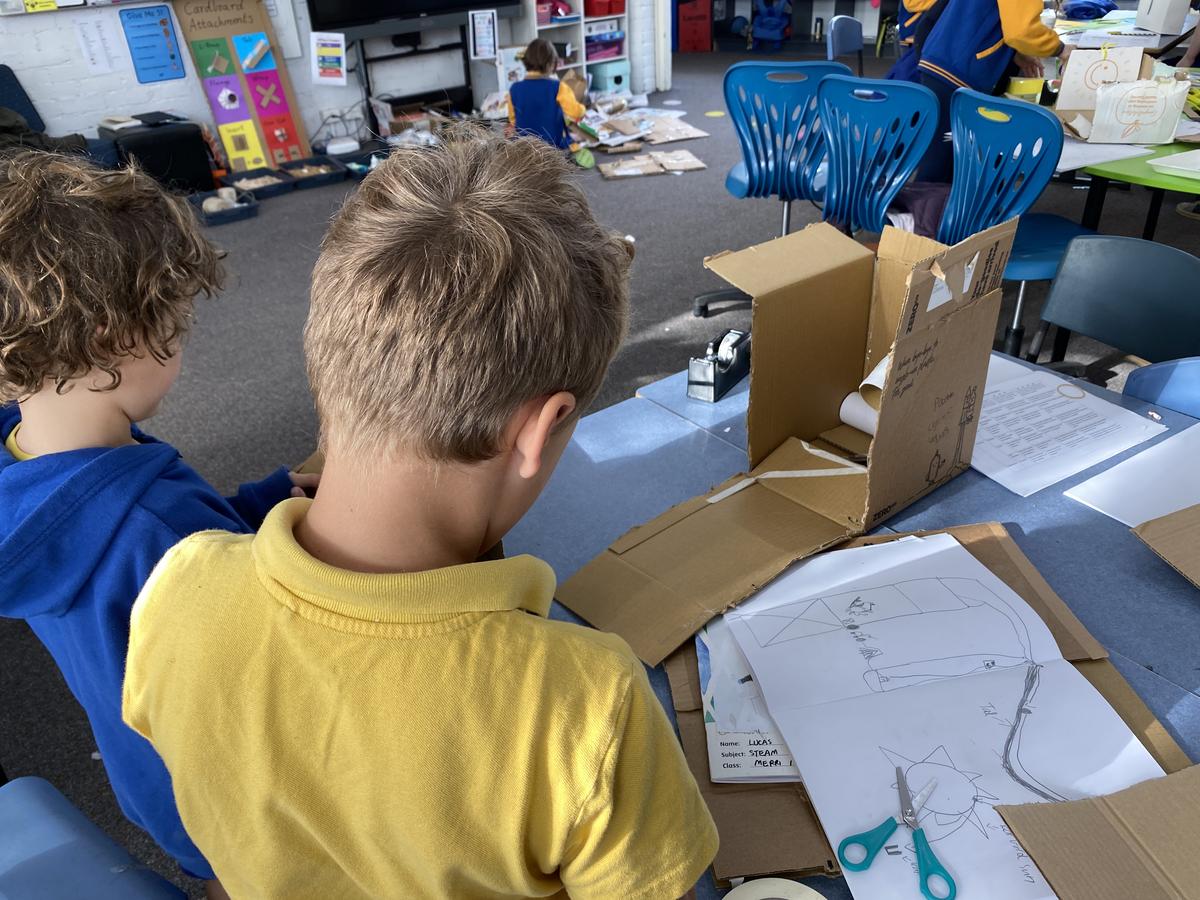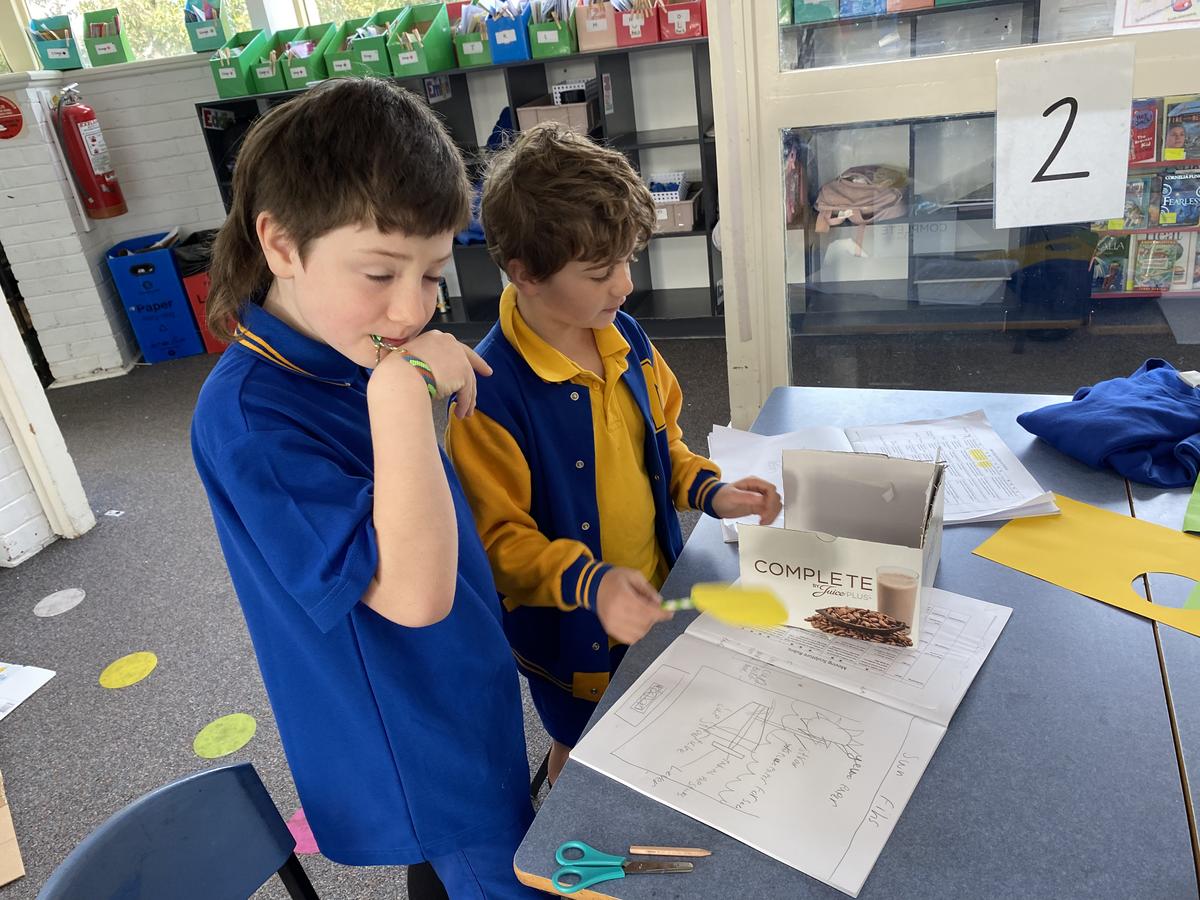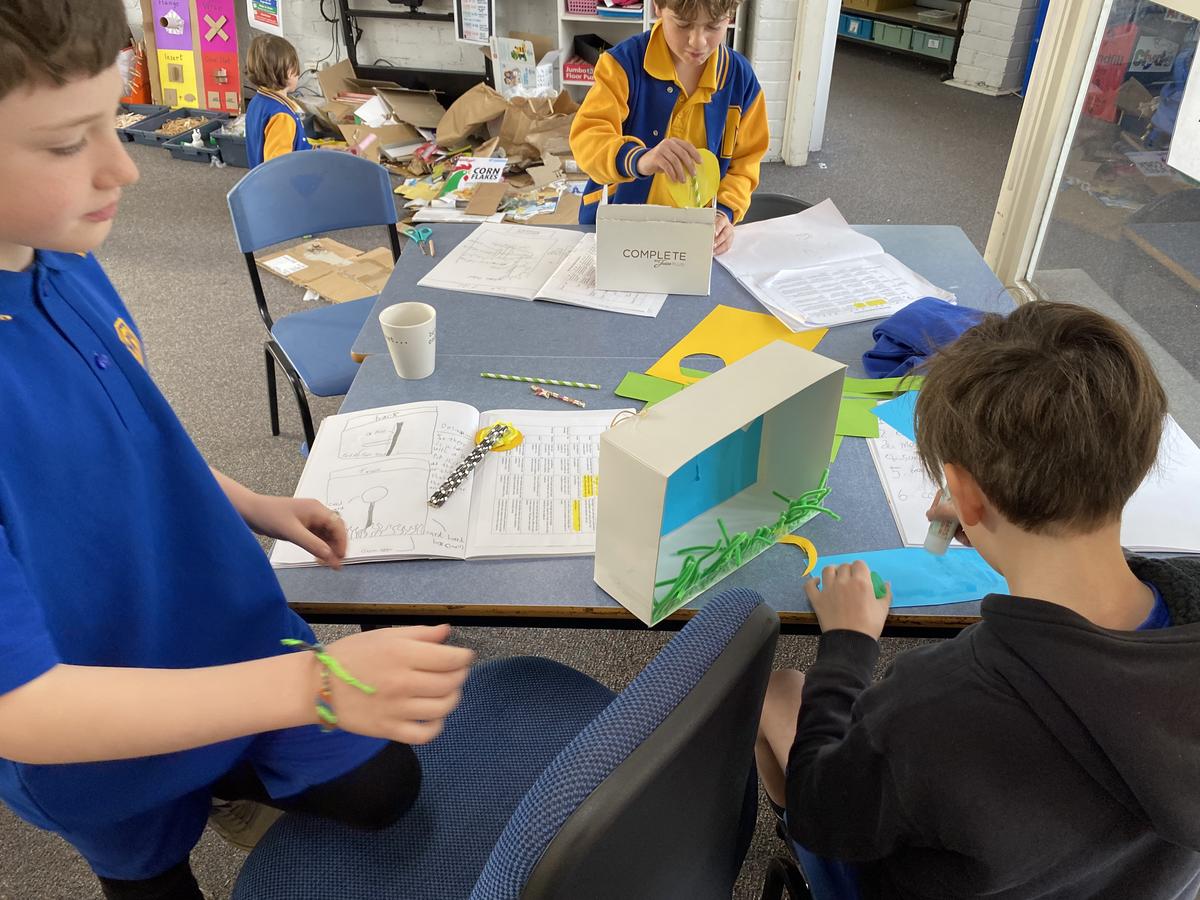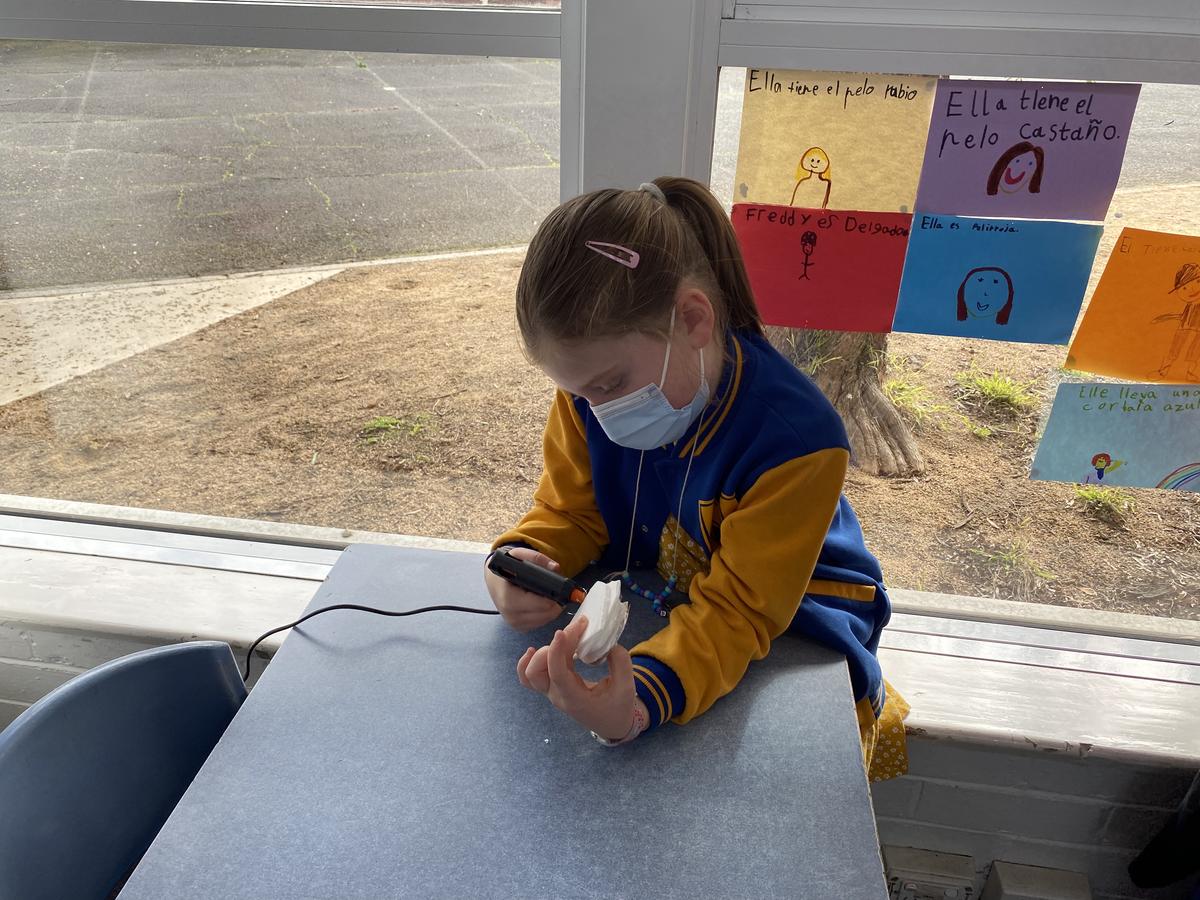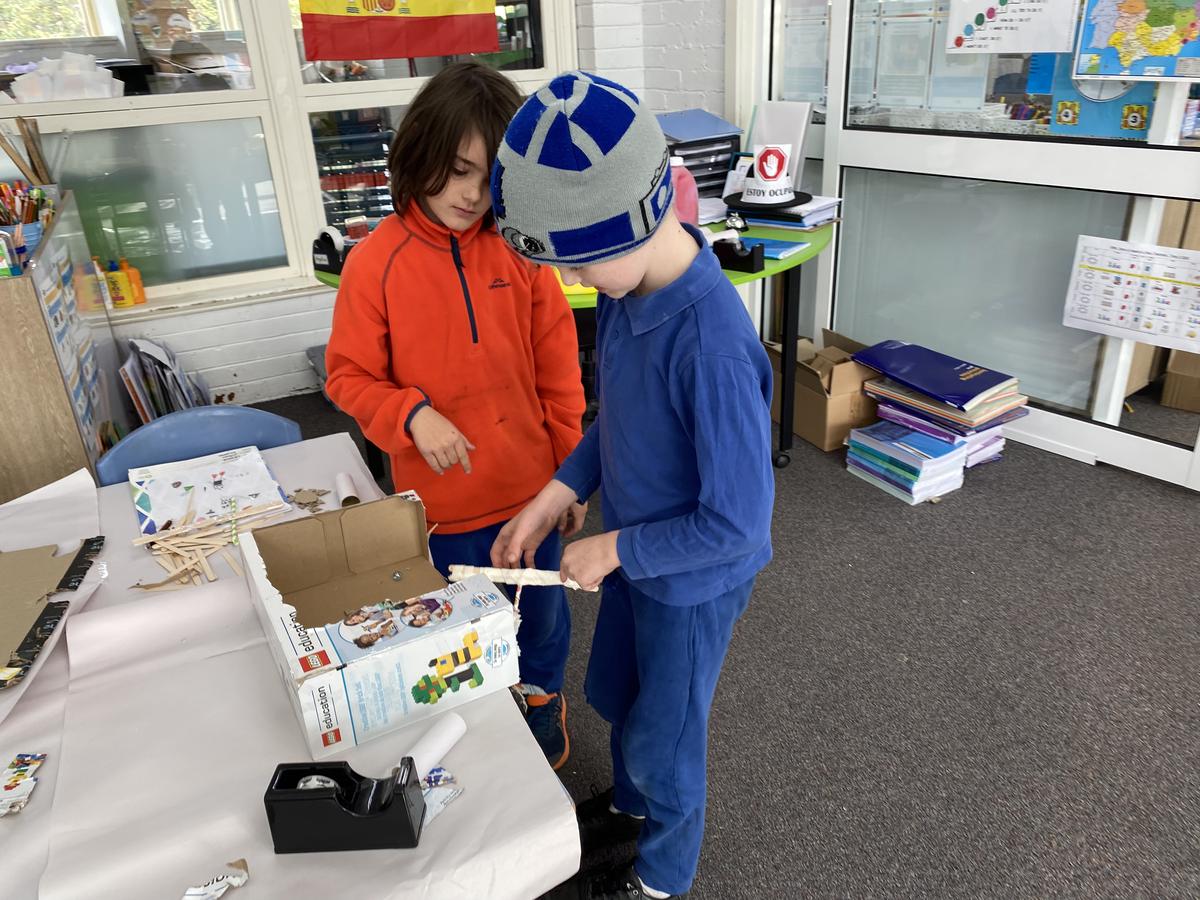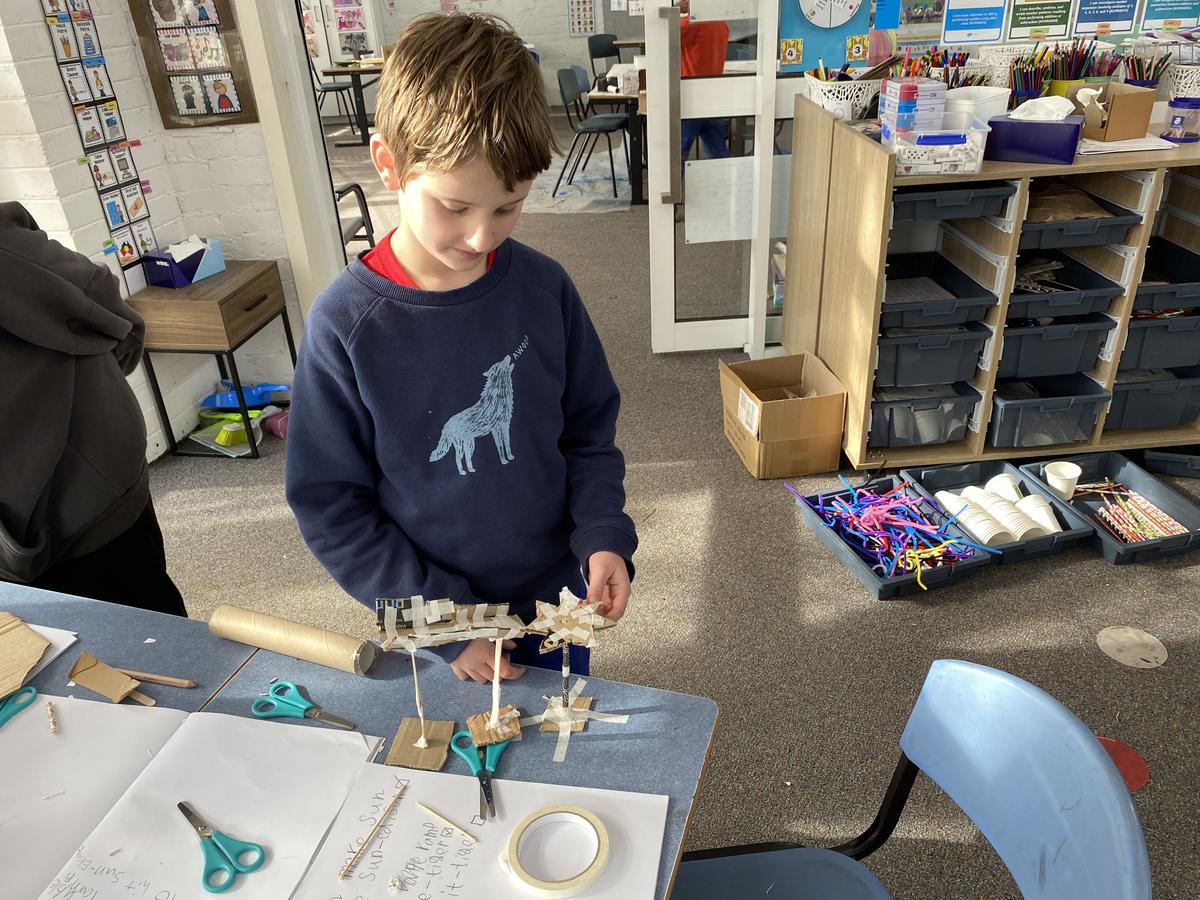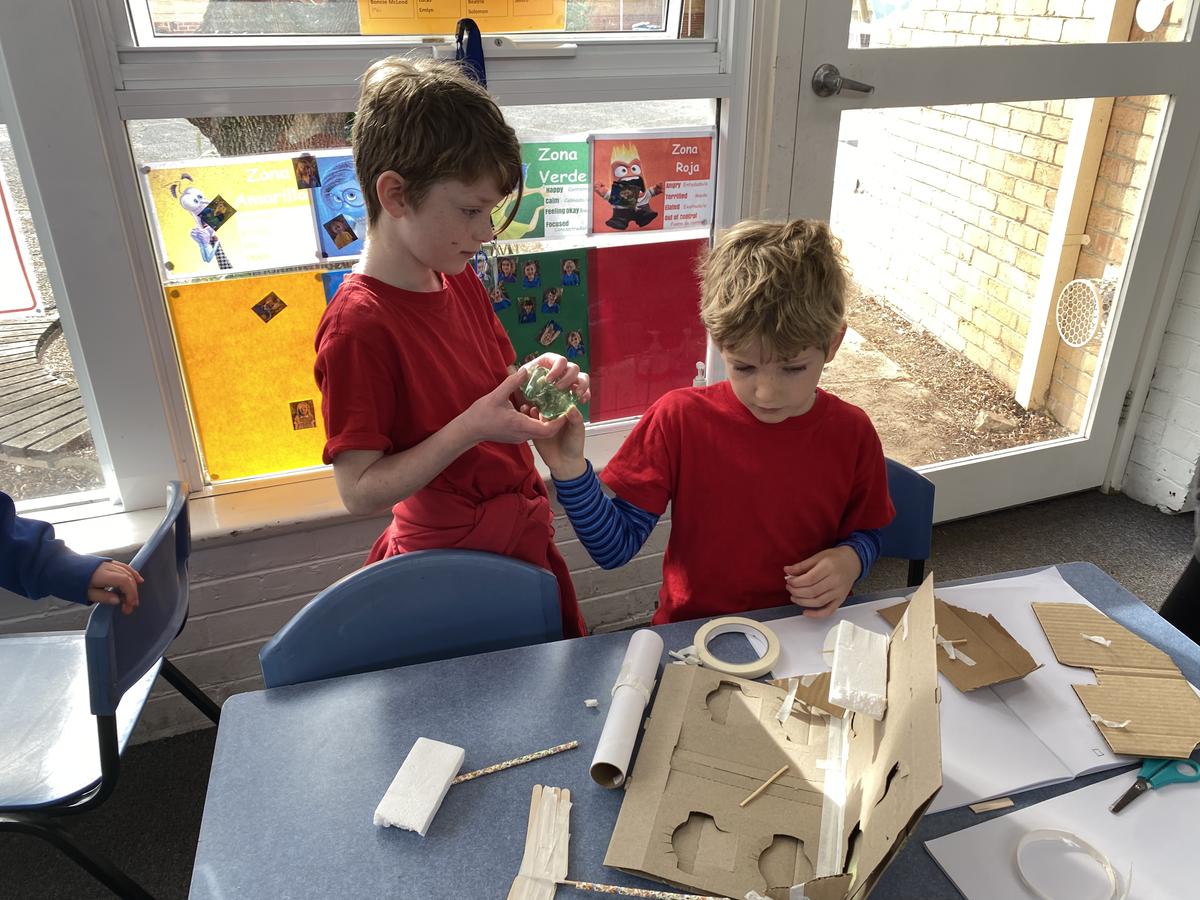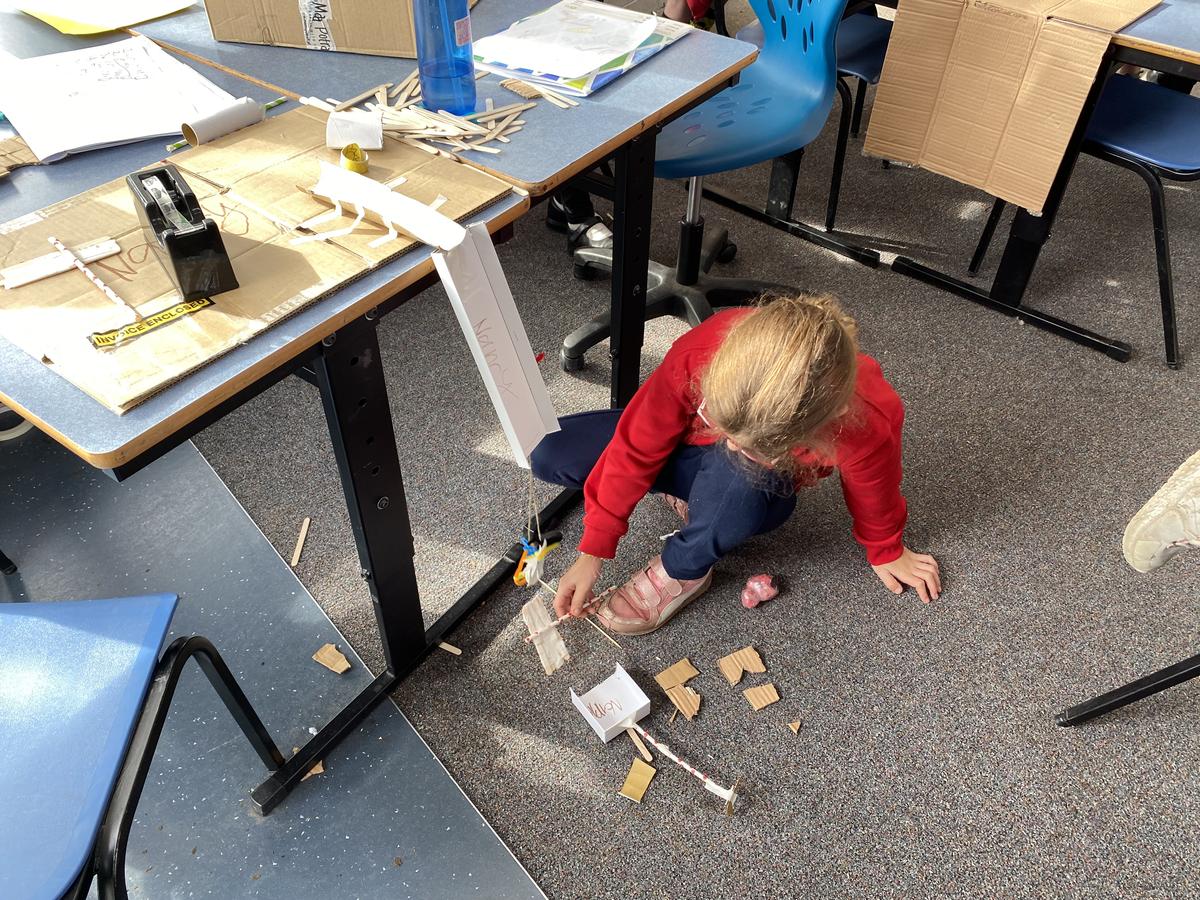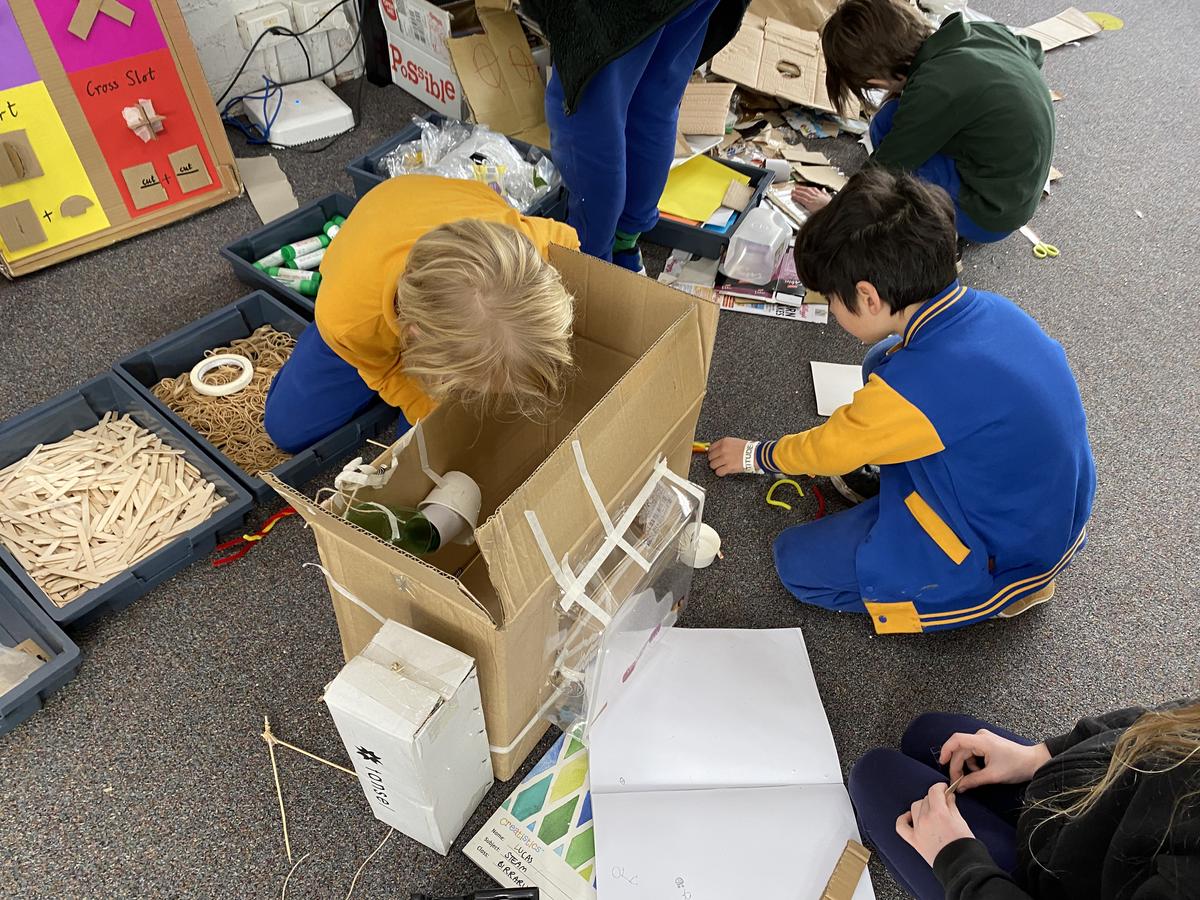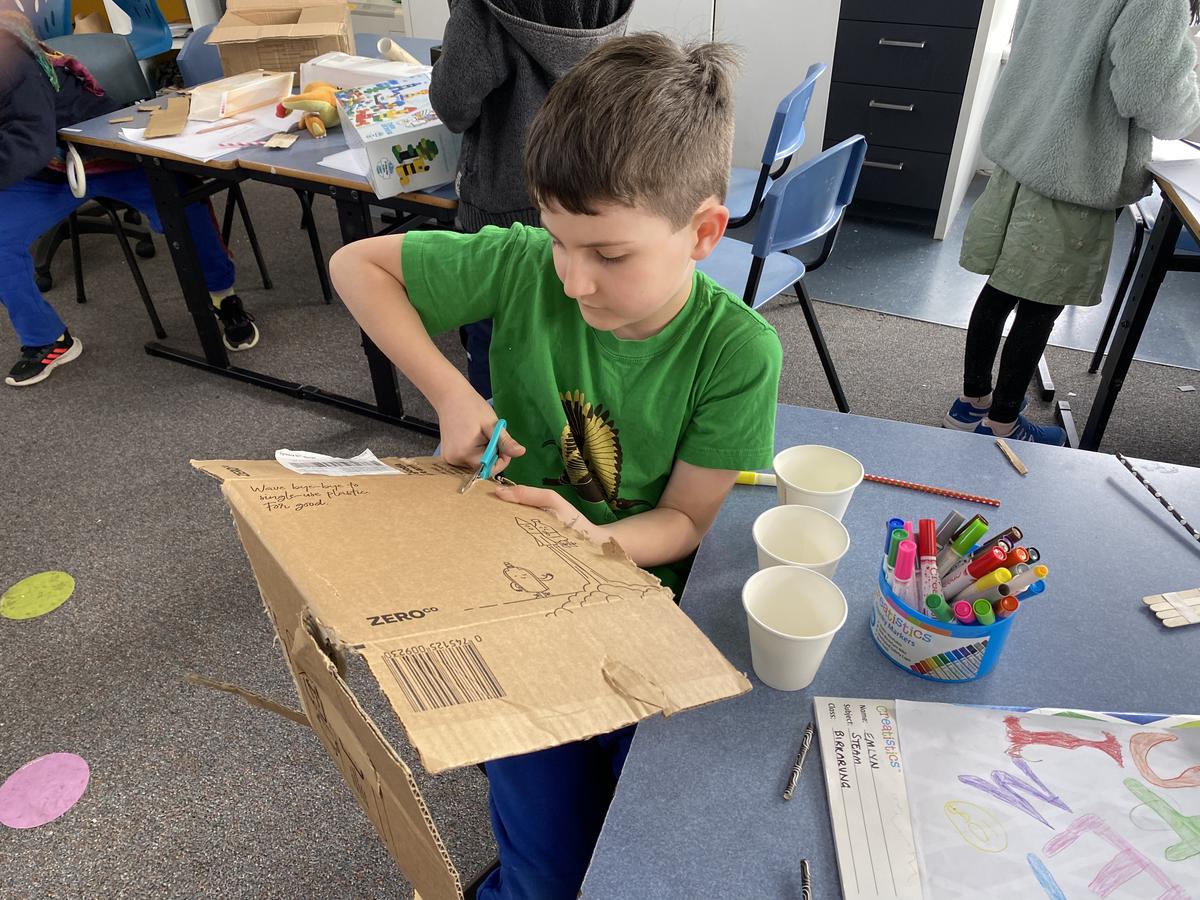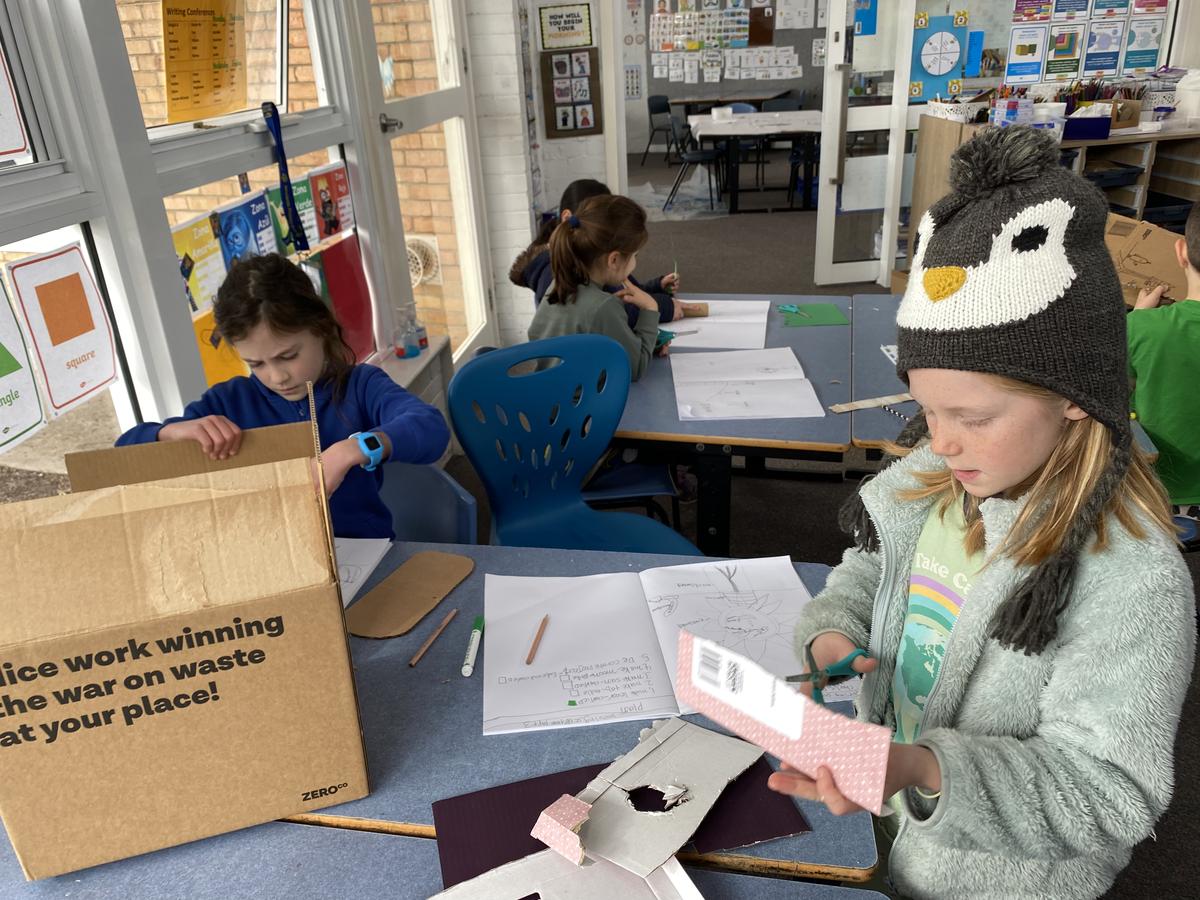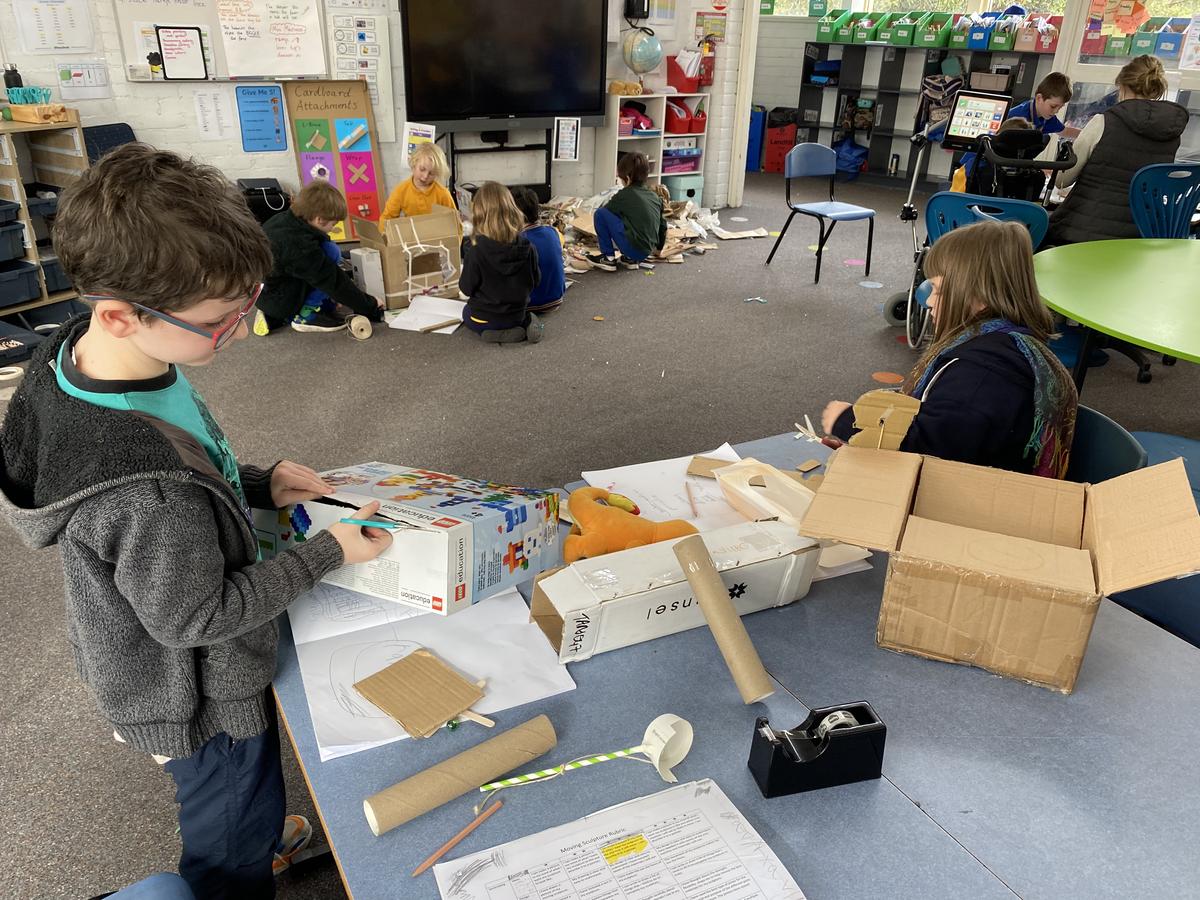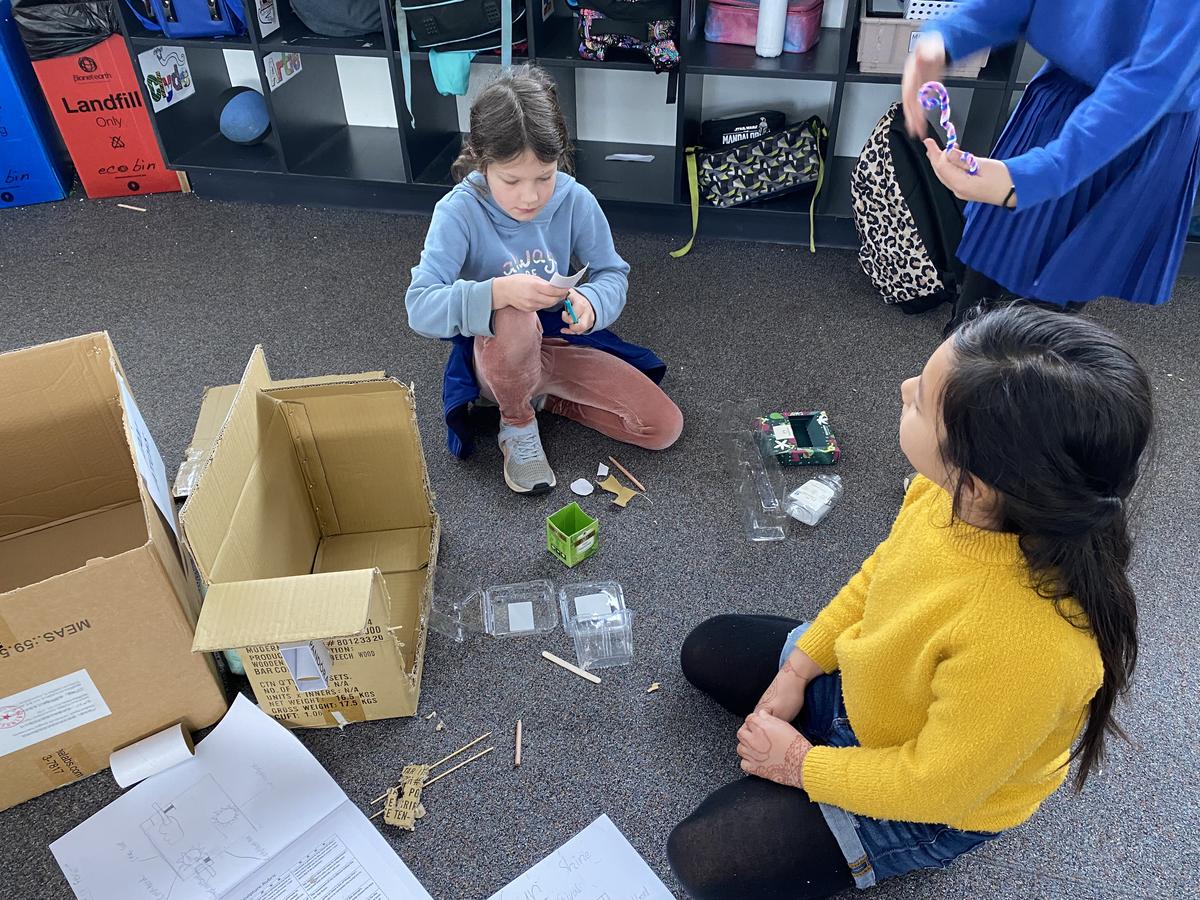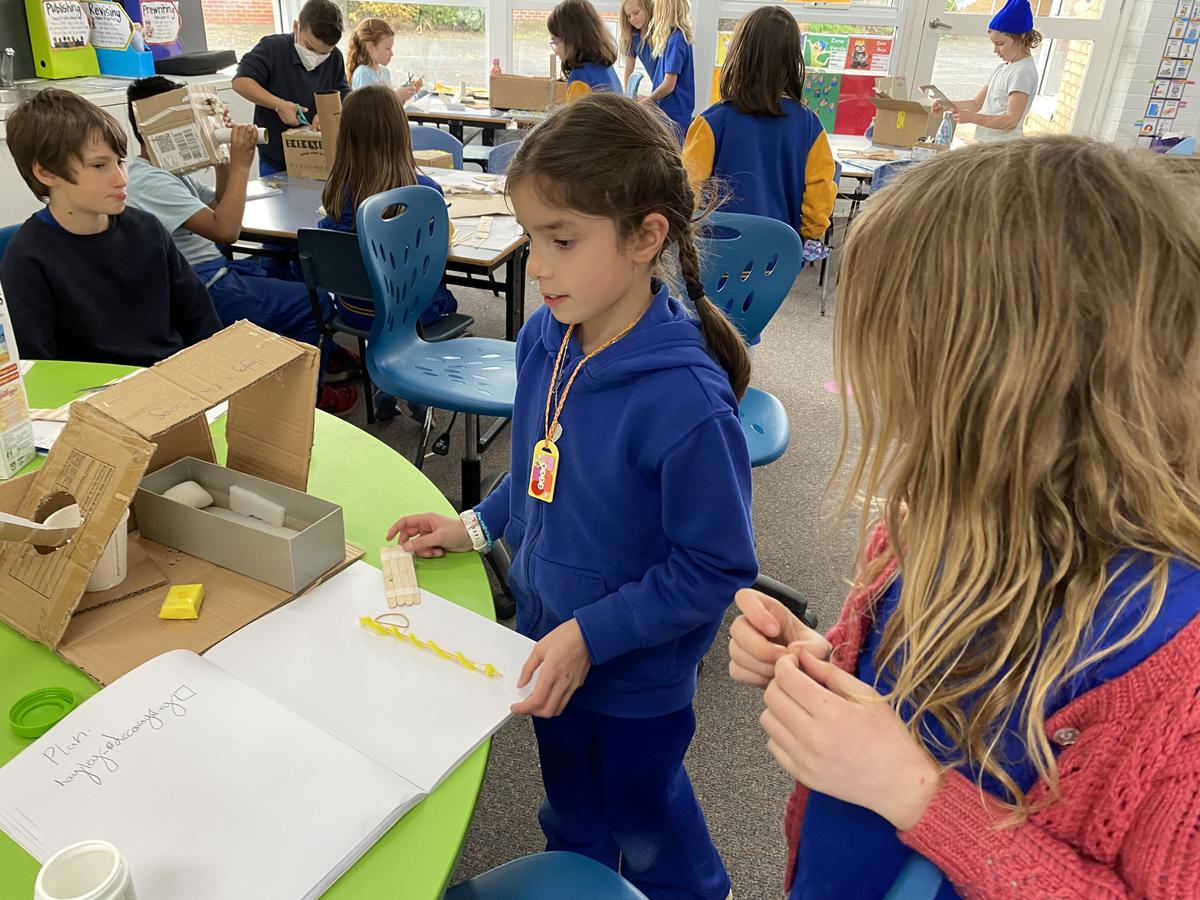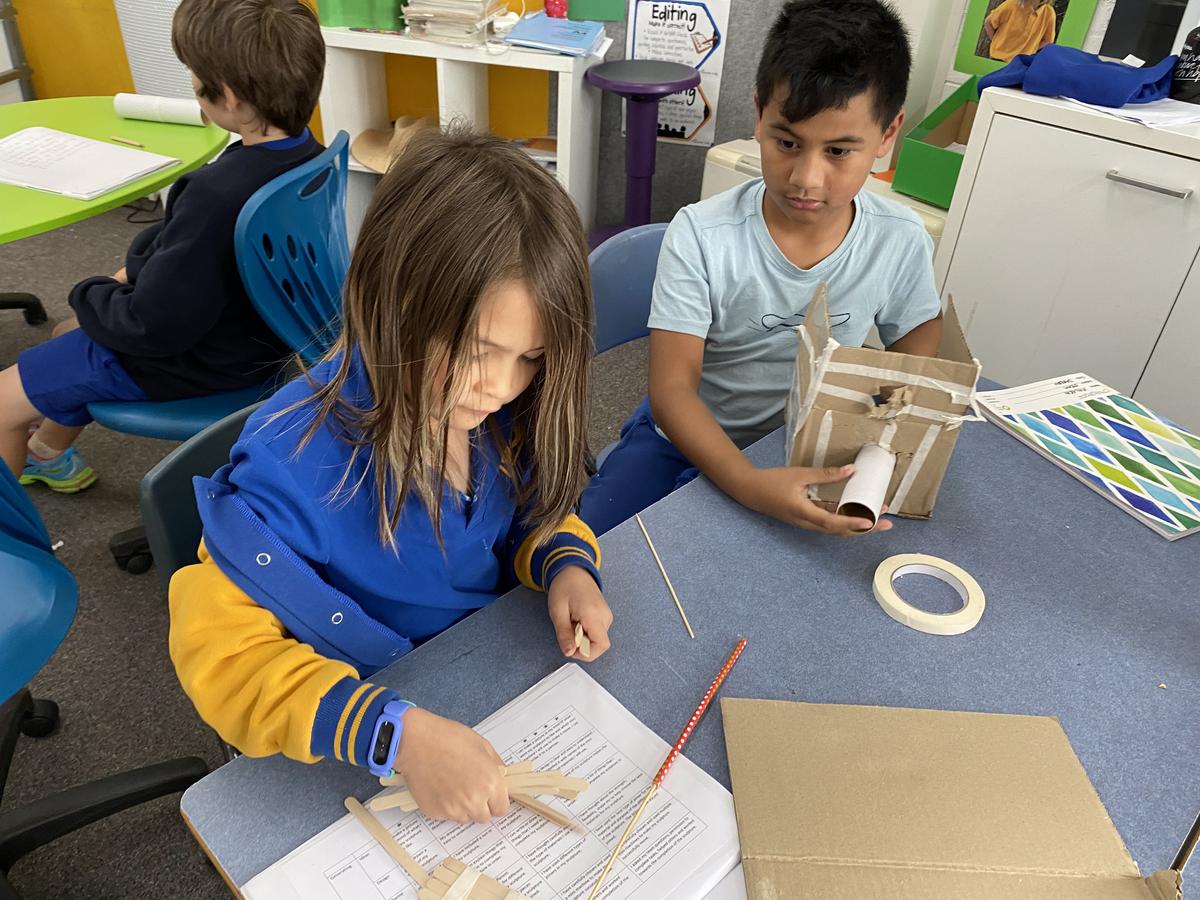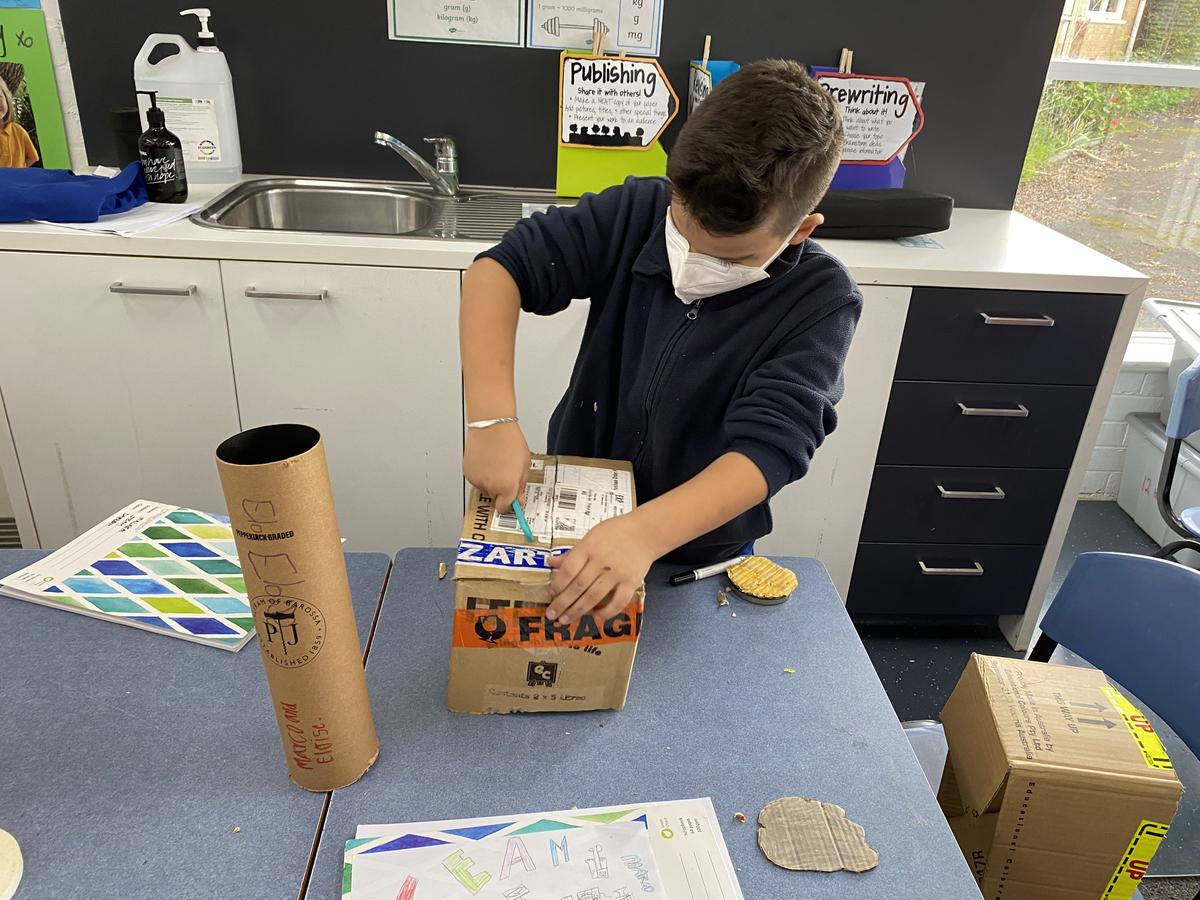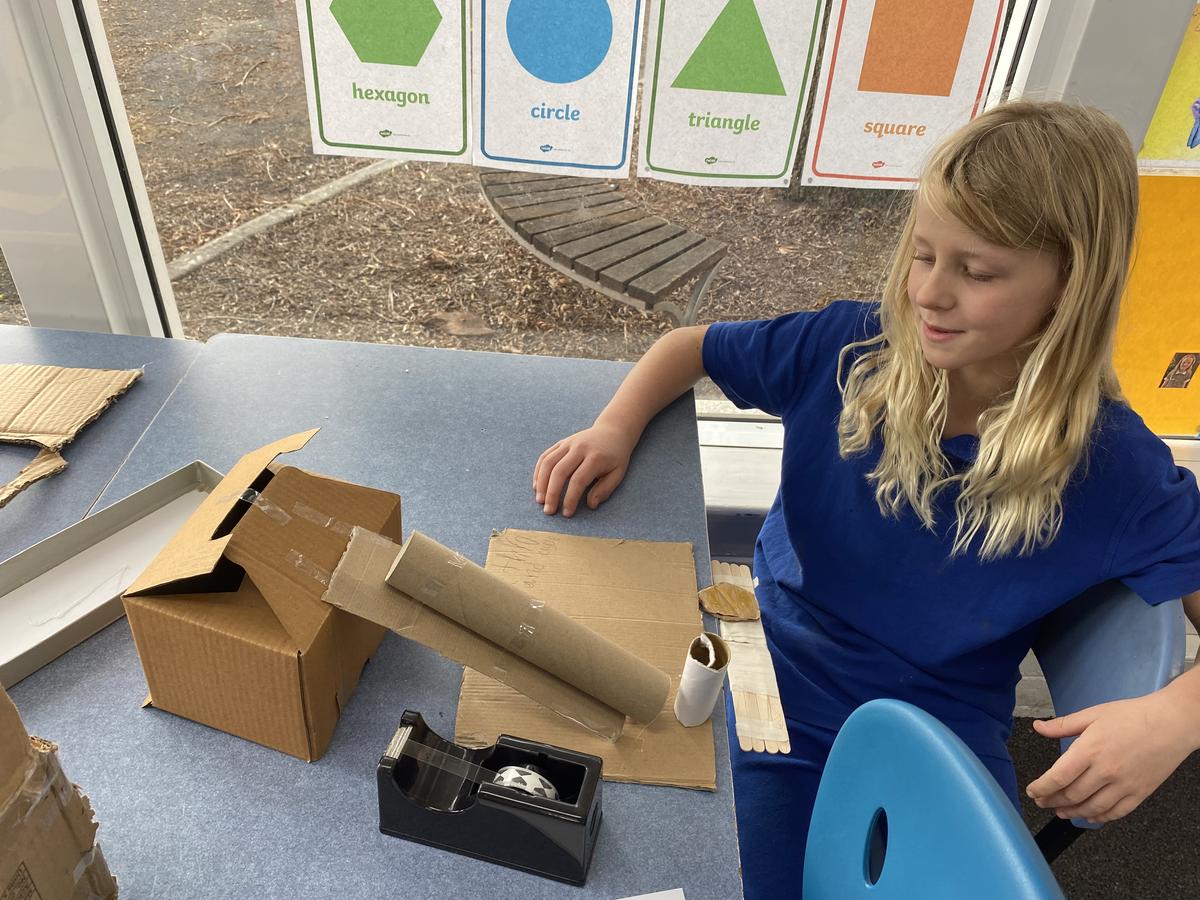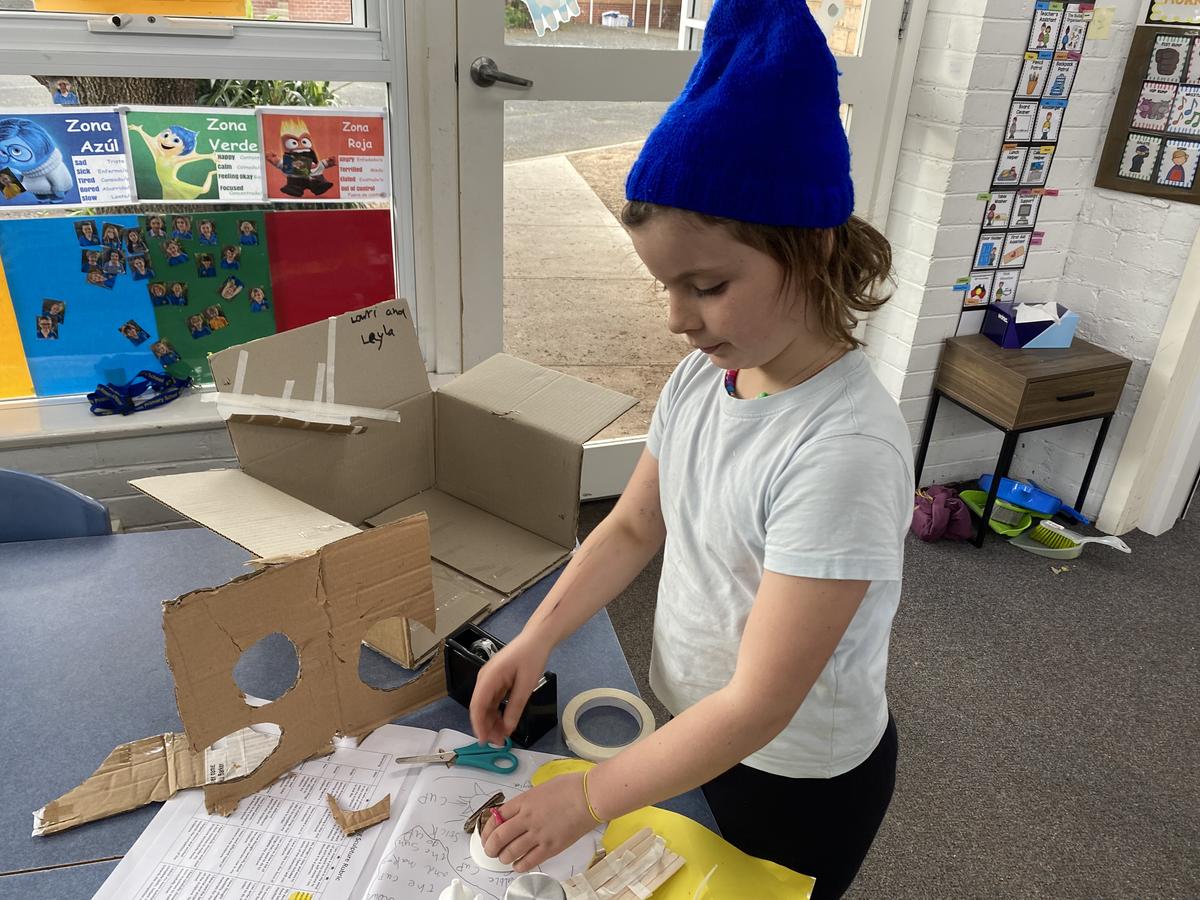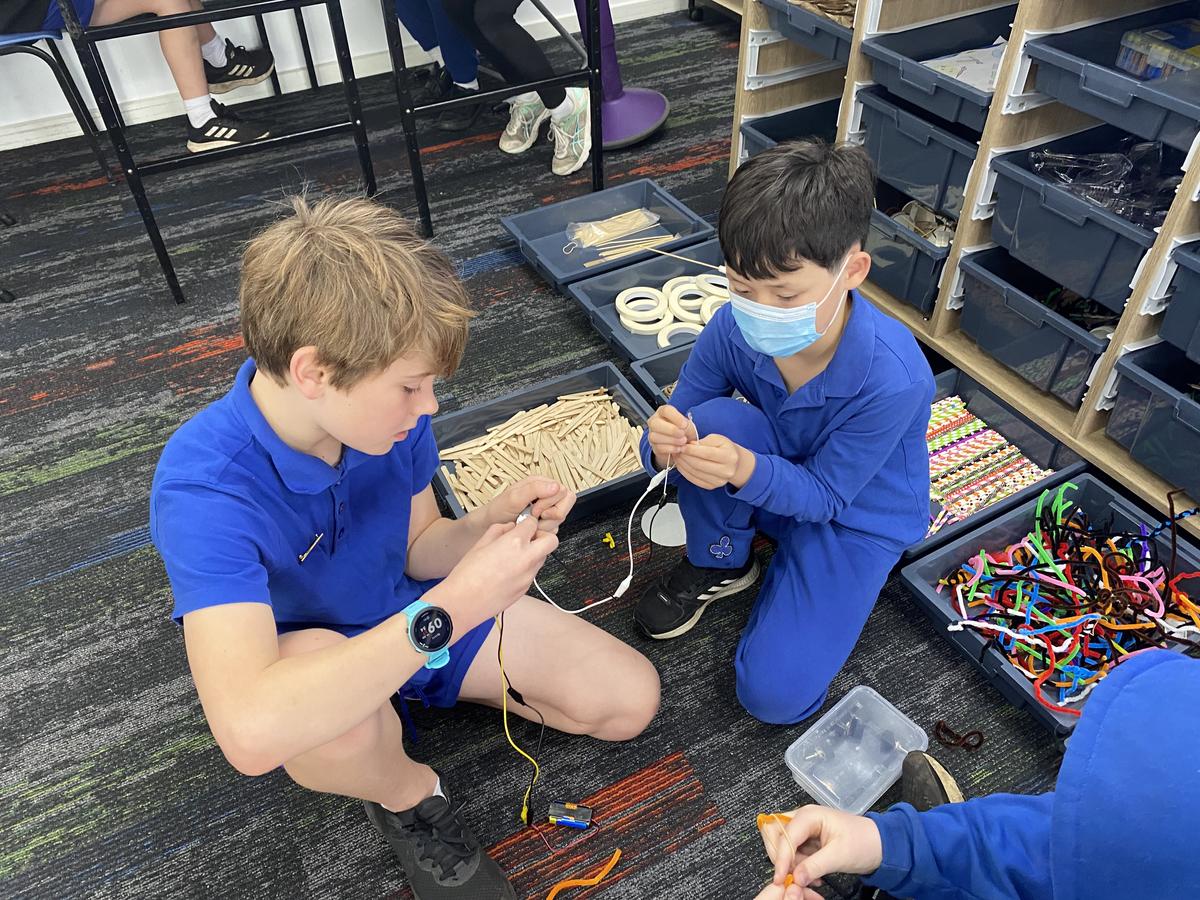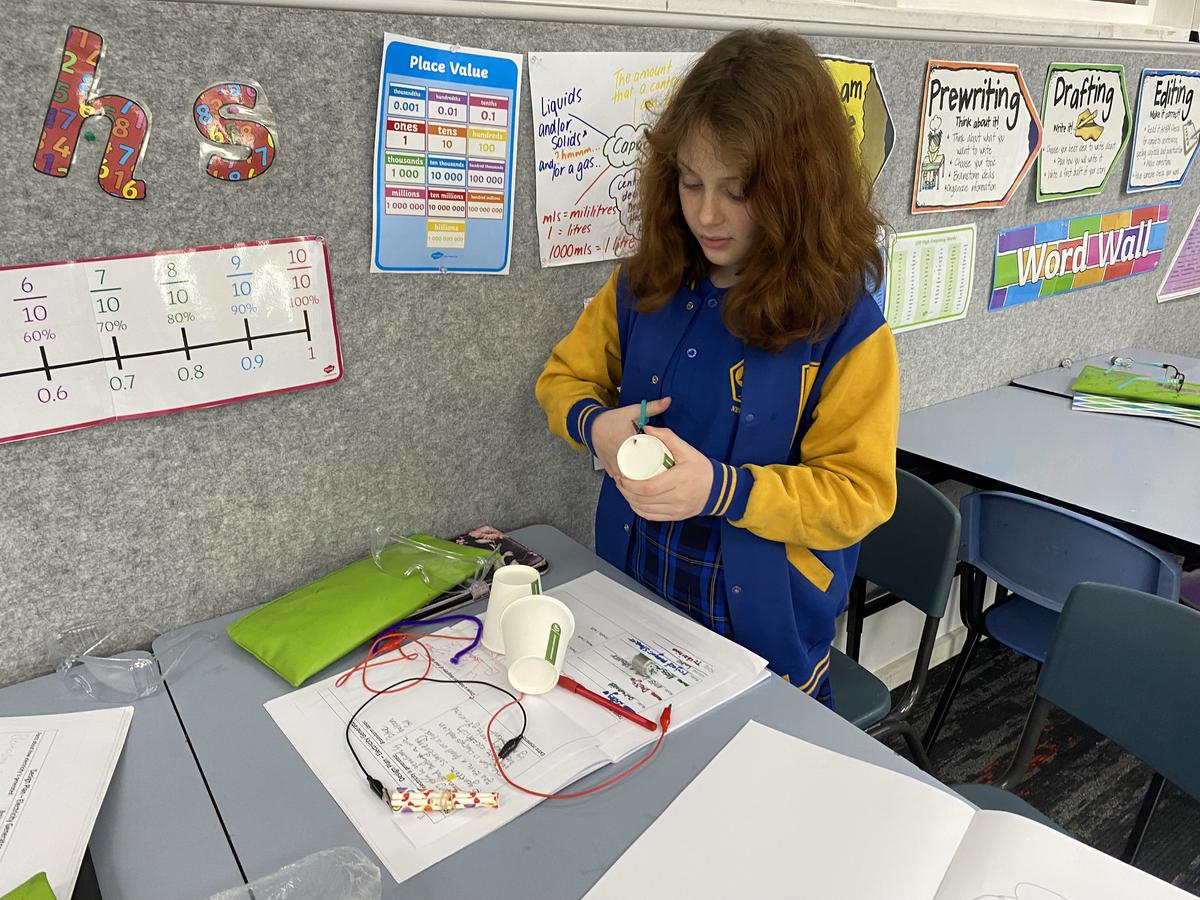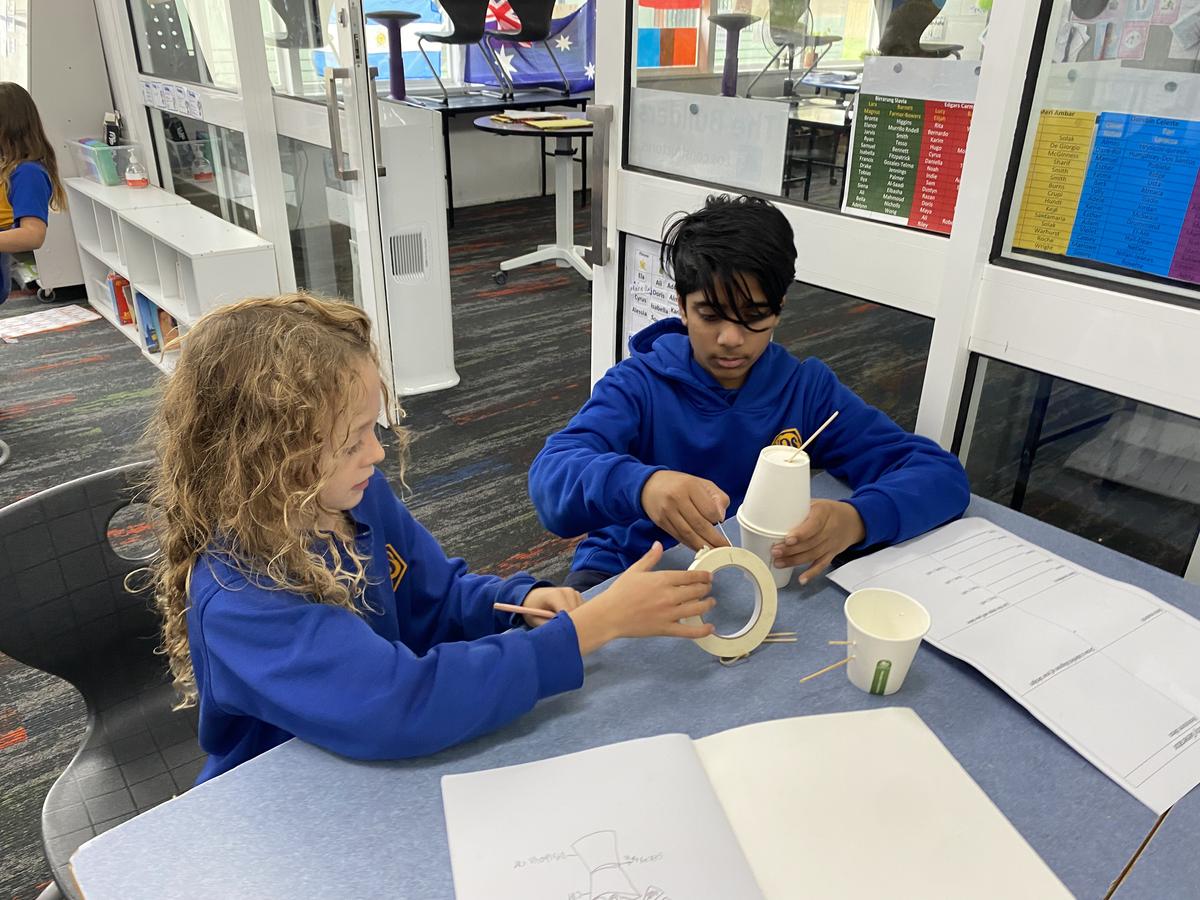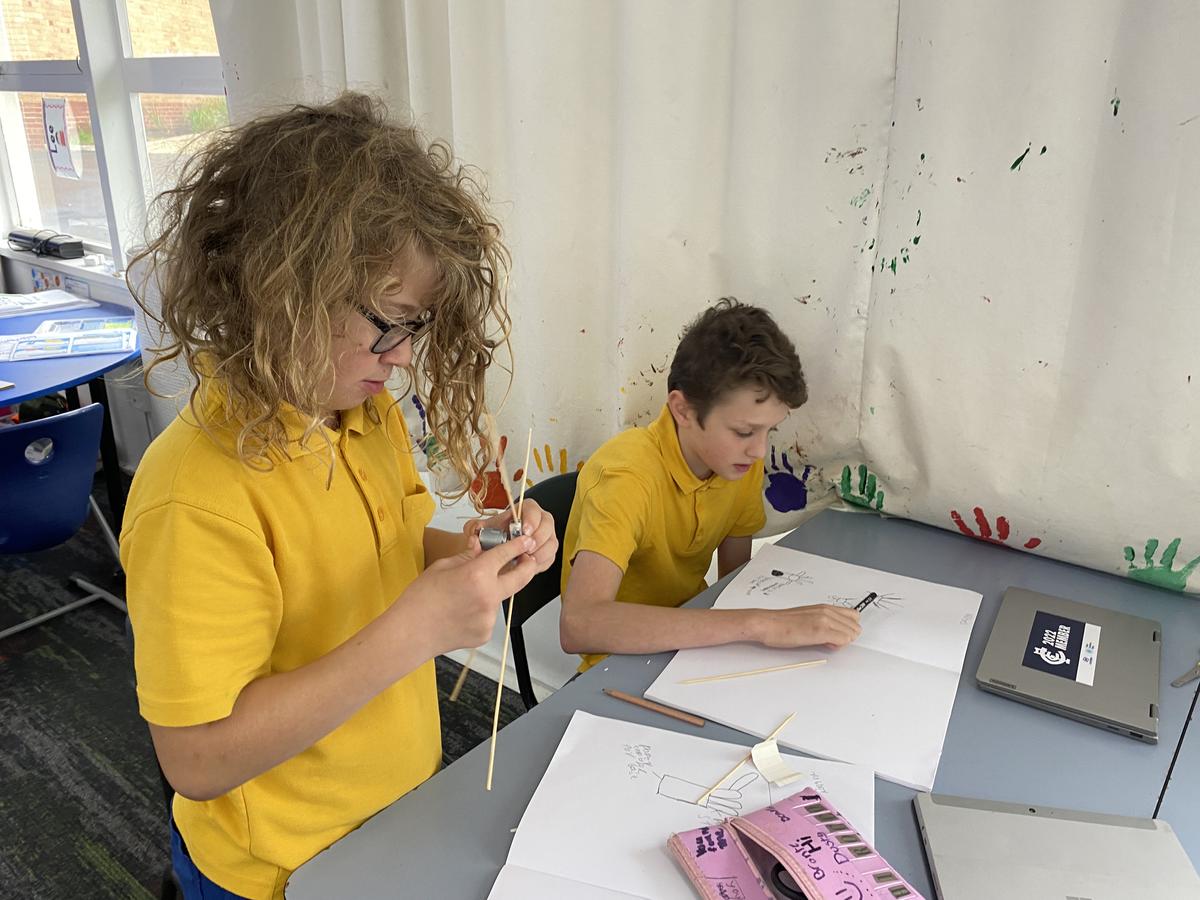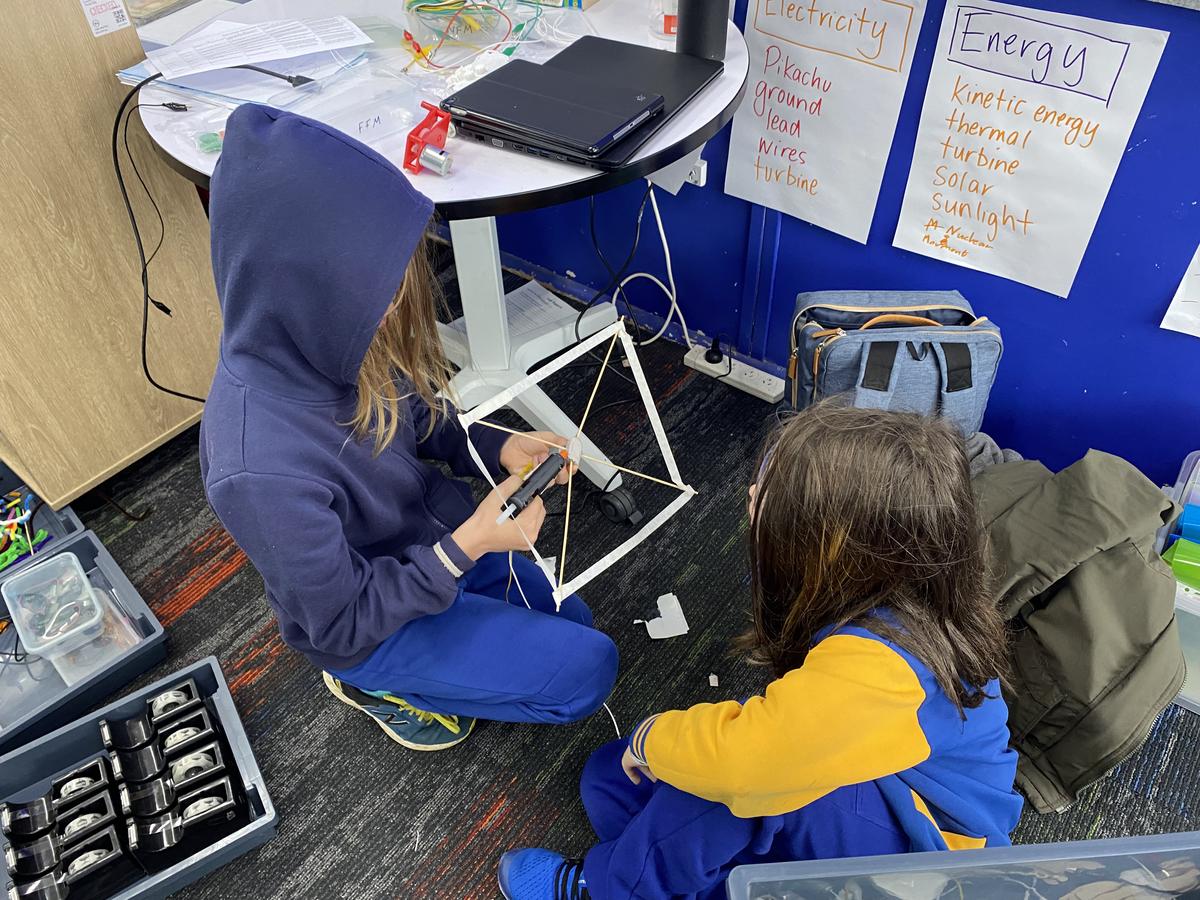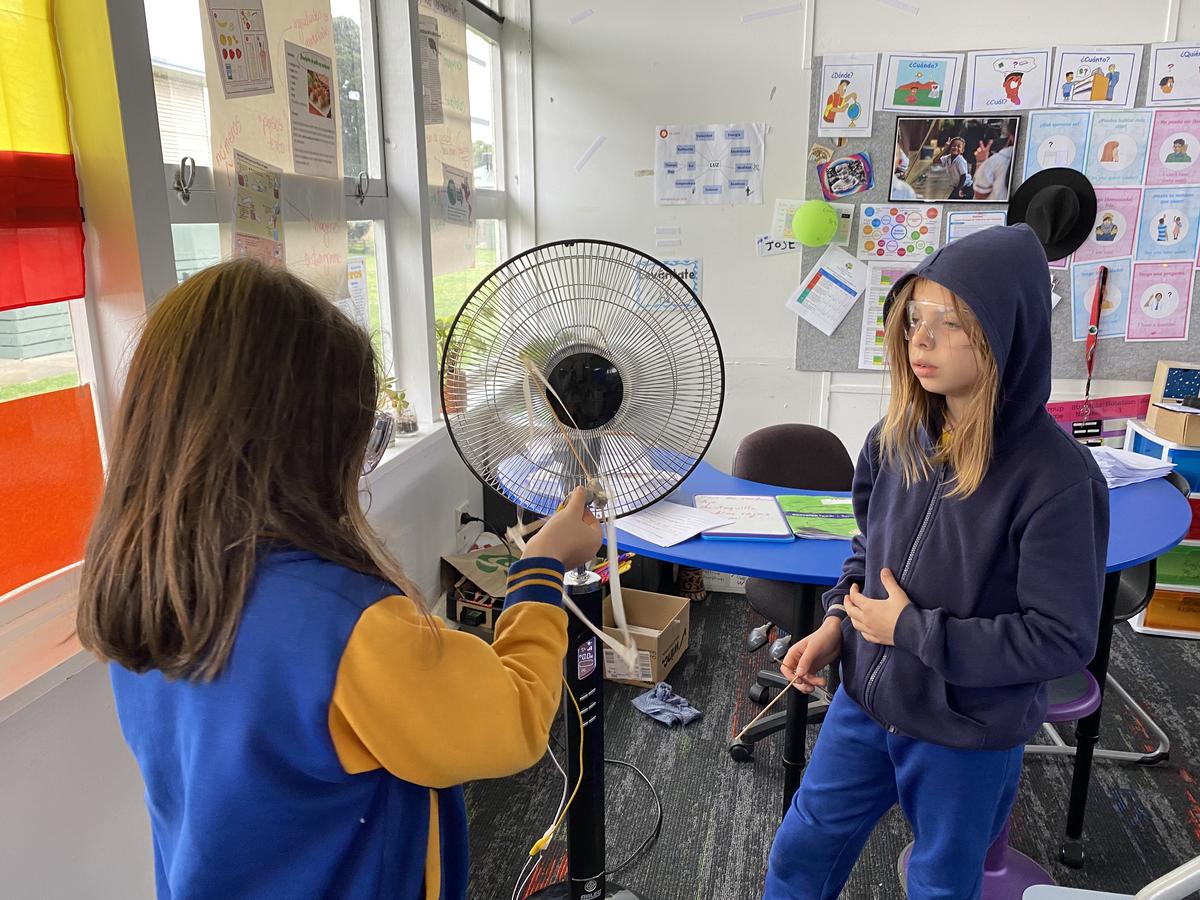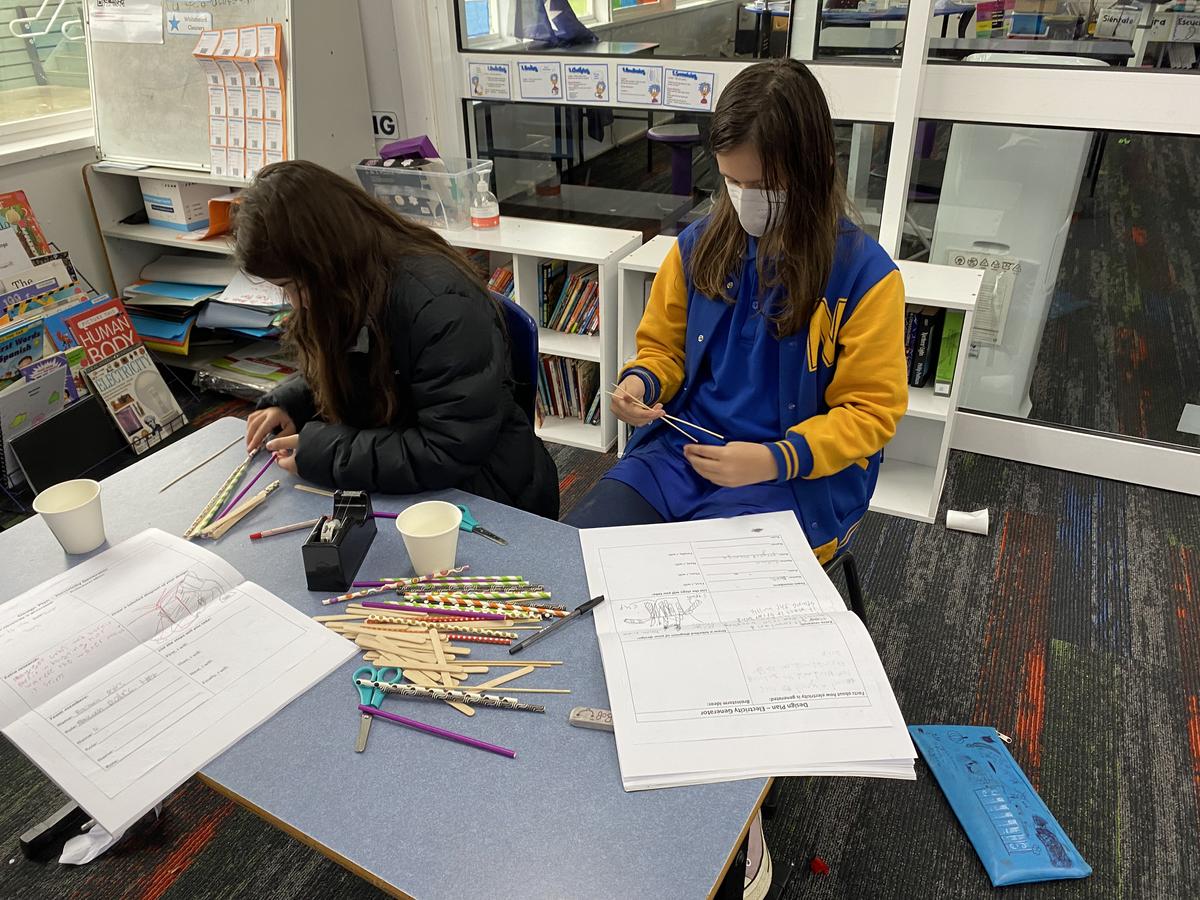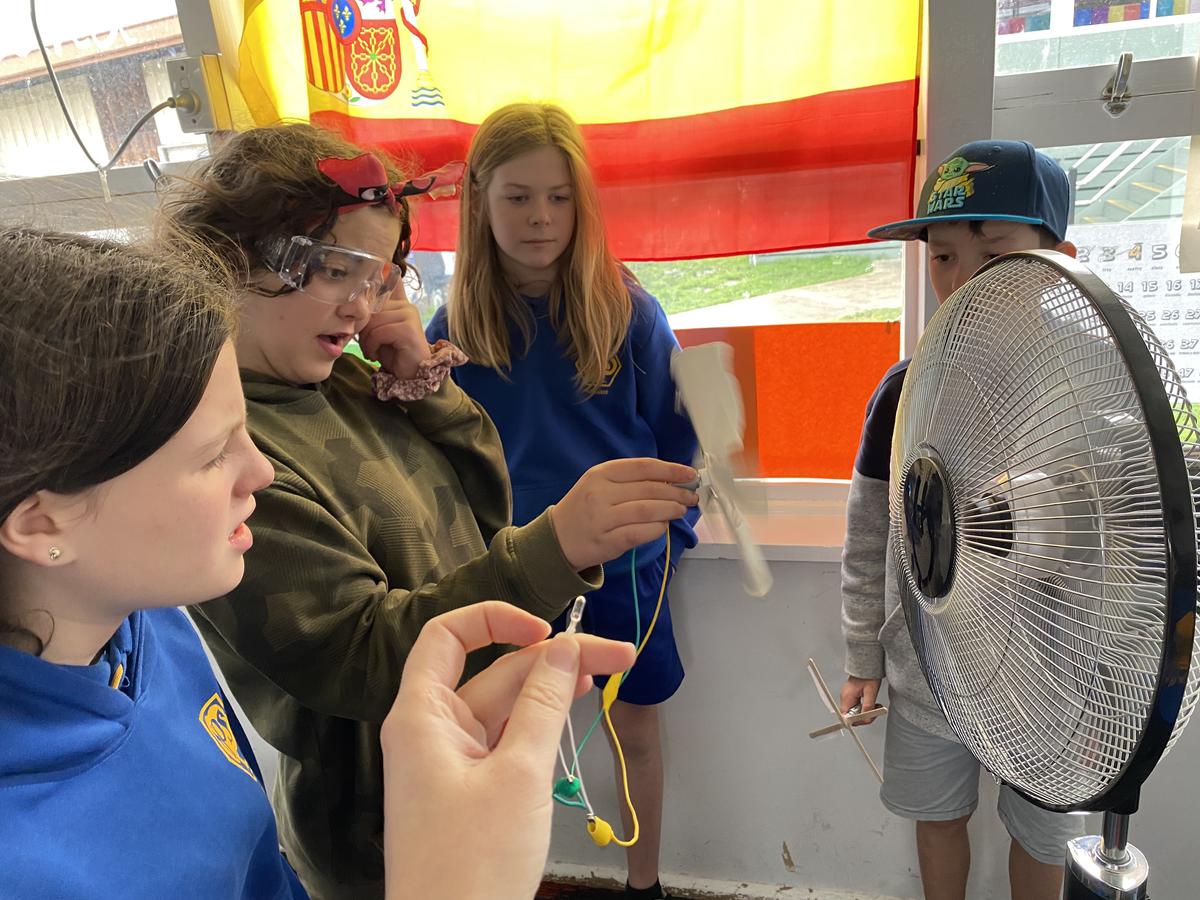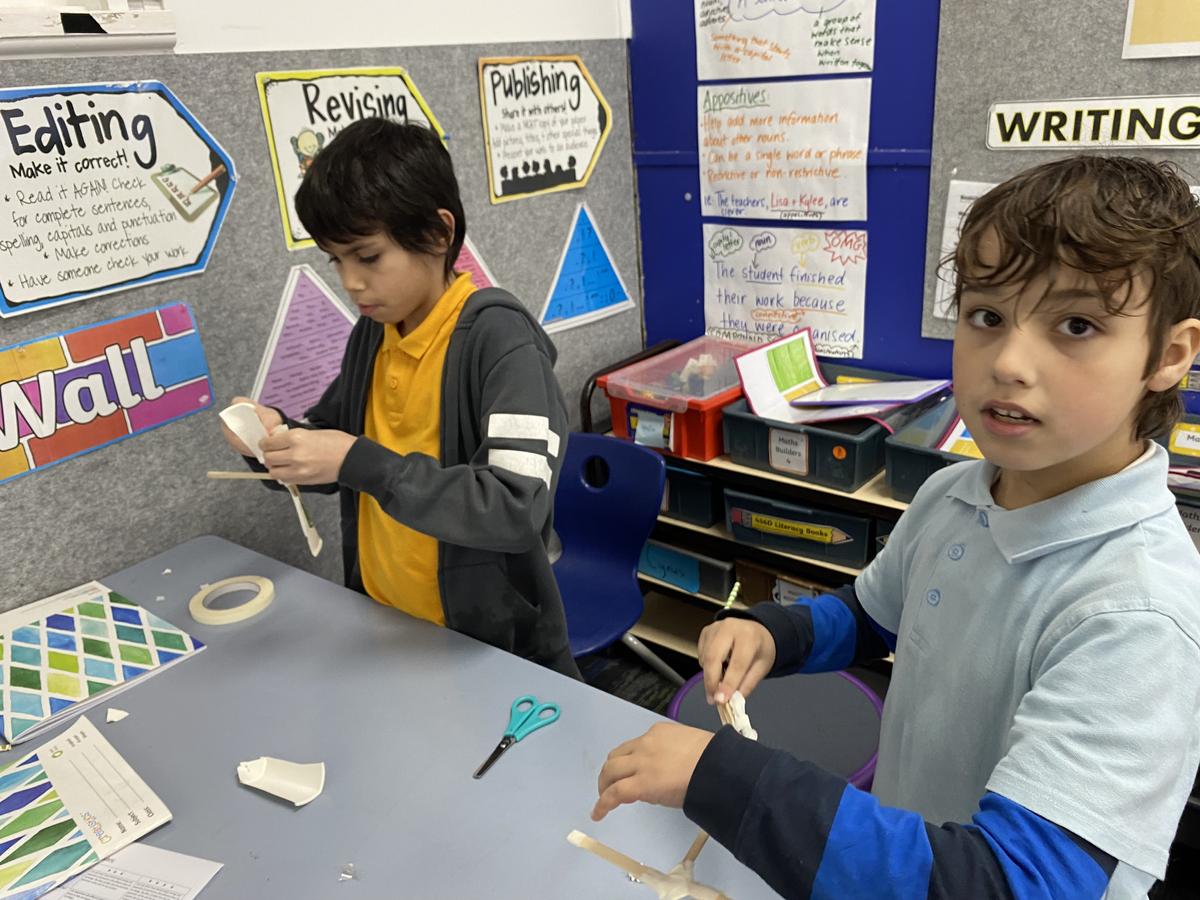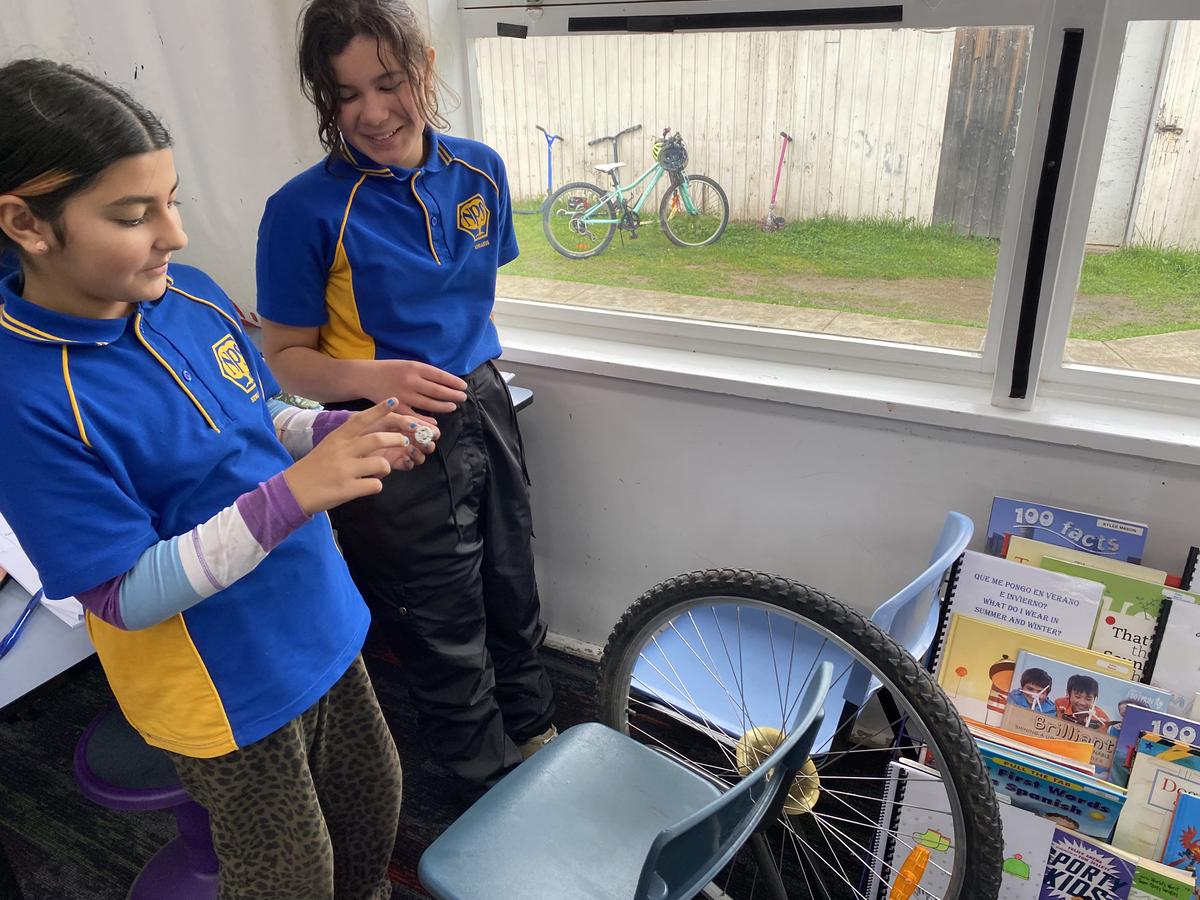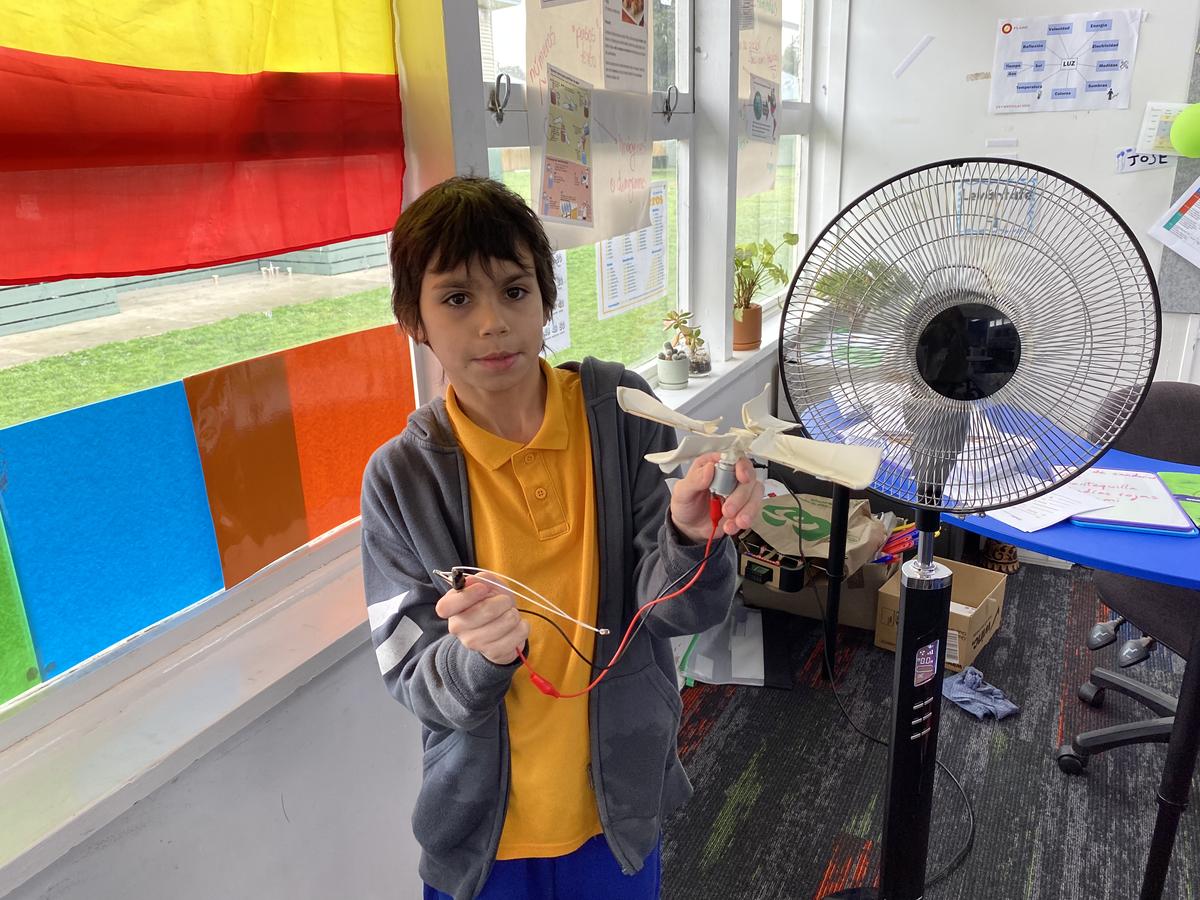STEAM
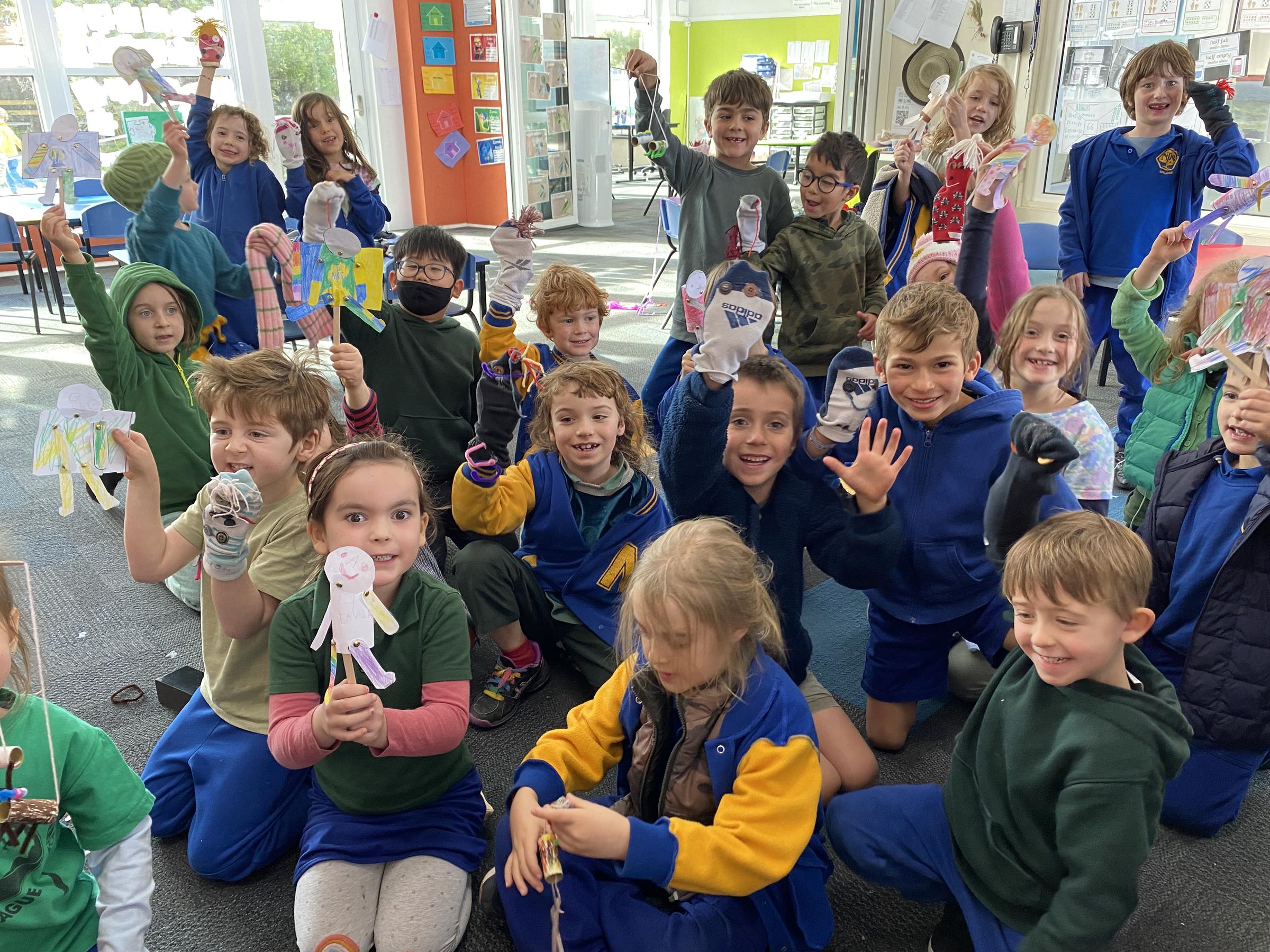
We have been very busy in STEAM lessons the past few weeks, focussing on designing and creating. Thank you to all of the families who generously donated goods to the STEAM program.
F/1
Students finished up their physical sciences investigations by looking at push and pull. They observed the way a ball moves when they push it, and how a rope moves when they pull it. Students came up with a generalisation that objects move away when you push and come closer when you pull. They then applied what they had learned about the way objects move to create their own puppets. They chose from 3 different types of puppets - paper, string or sock puppets. After planning and drawing a design, they explored which joining methods were best suited for the different types of materials. Students learned that not all joiners work on all materials. Once their puppets were made, they were able to create a puppet show in pairs or small groups and make their puppets move. Students also noticed that their puppets changed shape as they pushed and pulled on them.
2/3
After exploring how ramps and dominoes can be used in kinetic art, students were introduced to levers and how they work. They discovered through an investigation that heavier objects exert a greater force as the heavier balls pushed the lever harder to make a toy car travel further. Students brought all of their knowledge of forces, the way objects move and mini machines (i.e. ramps and levers) together to design their own piece of kinetic art. They designed a moving sculpture about the sun, which will tie into our Spanish Cultural week next week. In pairs, they have started constructing their sculptures using different cardboard attachment techniques. We are looking forward to seeing their final master pieces.
4/5/6
Students have been applying what they have learned about electricity to design their own electricity generators. Using a small motor, alligator clips and materials like cups, icy pole sticks, skewers and straws, students have been experimenting and testing out different designs. They have realised that kinetic (movement) energy is needed to rotate the motor's shaft to generate electricity. The challenge is how to make it move. We have seen some great designs including wind turbines, hand cranks and even investigations into the use of a bicycle wheel. The generators will be used to light up a light globe used in a painting that students have been working on in Visual Arts.

